We left Ishigaki on St George’s Day, beating a hasty retreat in case we became embroiled in any further argy-bargy with the coastguards. Paul tried to call them on VHF to let them know our intentions but received no reply, so at 8am we untied from the wall and I steered us out.
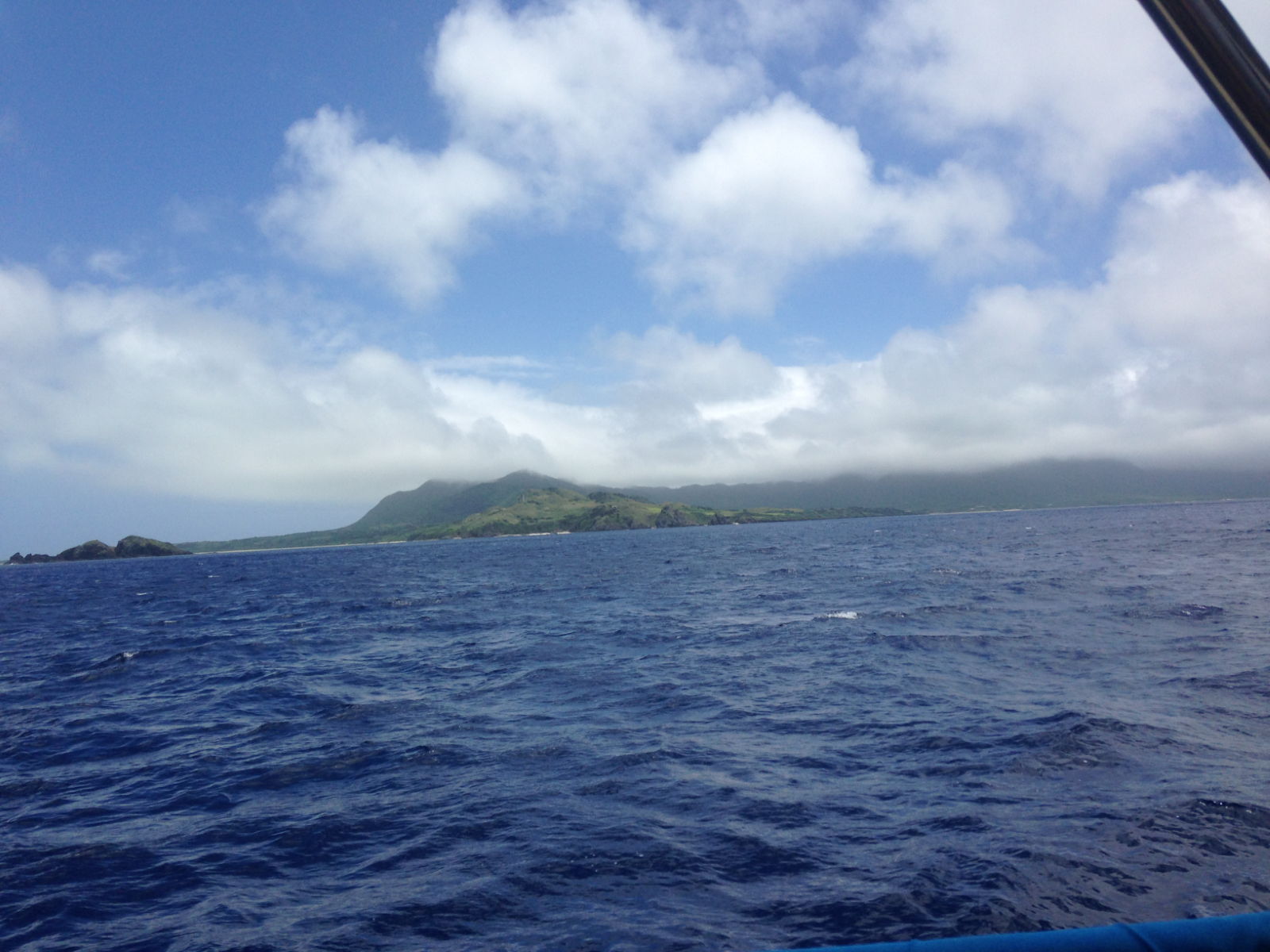
For me, the main thing about the night passage that followed, was learning how to deal with the steering on the wind vane. It needed lots of tweaking (much more than the autohelm) and it took me a while to get the balance right but I got there in the end. It’s just as well because that’s what we’ll be using when we cross the Pacific. We managed without the engine all the next day too and had a blissfully uneventful day until Paul said another storm was on the way. Had this one, when it arrived, been the first one we’d experienced at sea, I would have been terrified but the two we’d recently gone through were far worse so I was almost blase about it. The radar picture shows the extent of it (although some of that is the land mass of Okinawa).

Paul got soaked through up above and it’s become clear that the brand new oily Gill jacket he bought is faulty. Very frustrating as it was expensive and from a supposedly reputable company. I carried out my usual role of shouting out radar, iPad and AIS info – we were perilously close to a couple of fishing boats at one point. I also managed to make a couple of pot noodles which was all we felt we could eat. We had to put the engine on to aid the steering but the storm abated as quickly as it arrived and by dawn we were approaching Yonabaru.


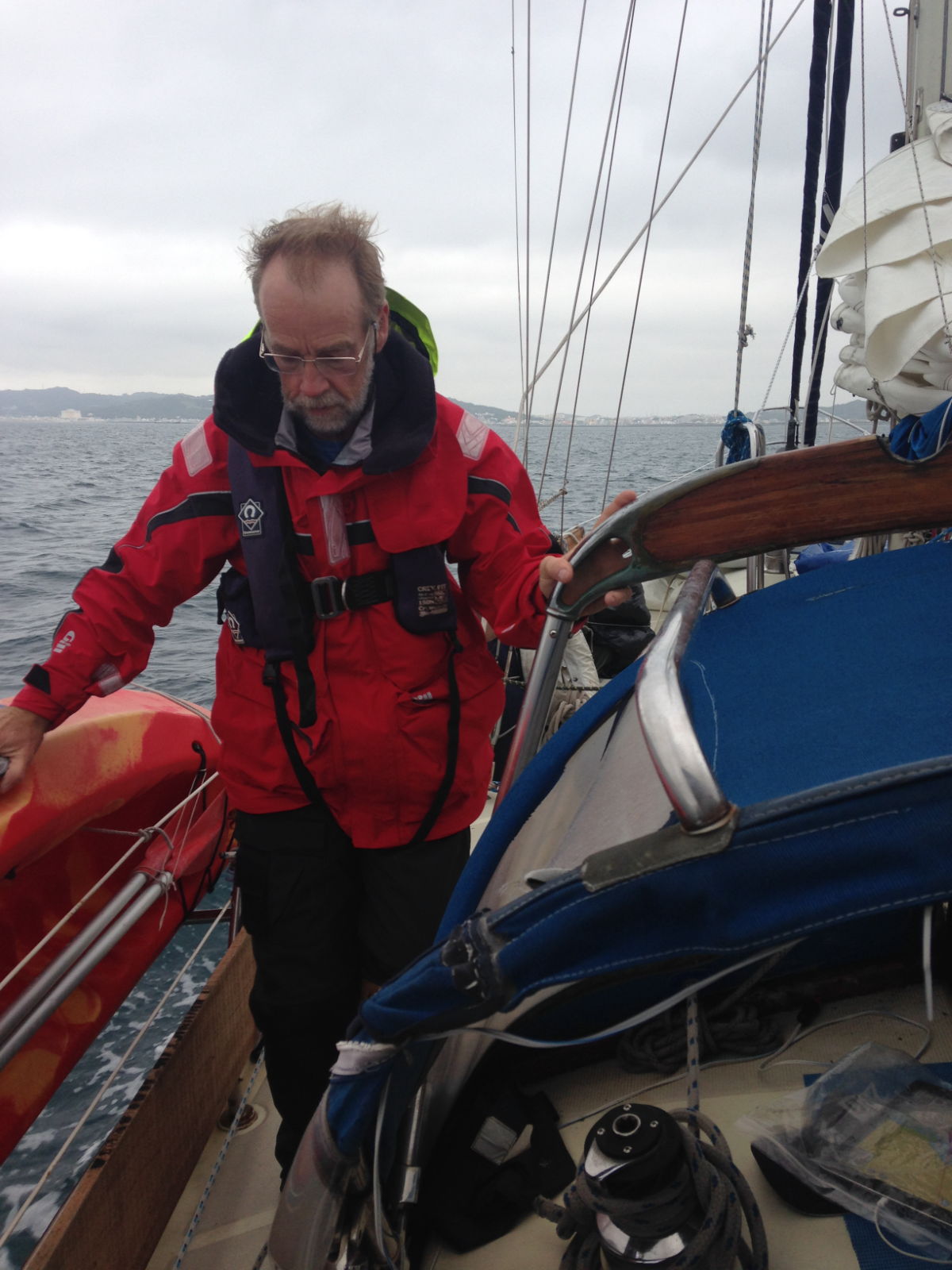
It was a chilly, murky and grey morning on the long, slow approach to the harbour. We had our thermals on and a cold rain was falling. At least the sea was calm. Berthing in the marina at Yonabaru was such a contrast to tying up at Ishigaki. The smiling man who took our lines bade us welcome to Japan and gave us unasked for useful local info and then the manager came out to extend his welcome by showing us around the facilities and explaining the gate codes etc. It made such a difference, and the marina itself was very peaceful.
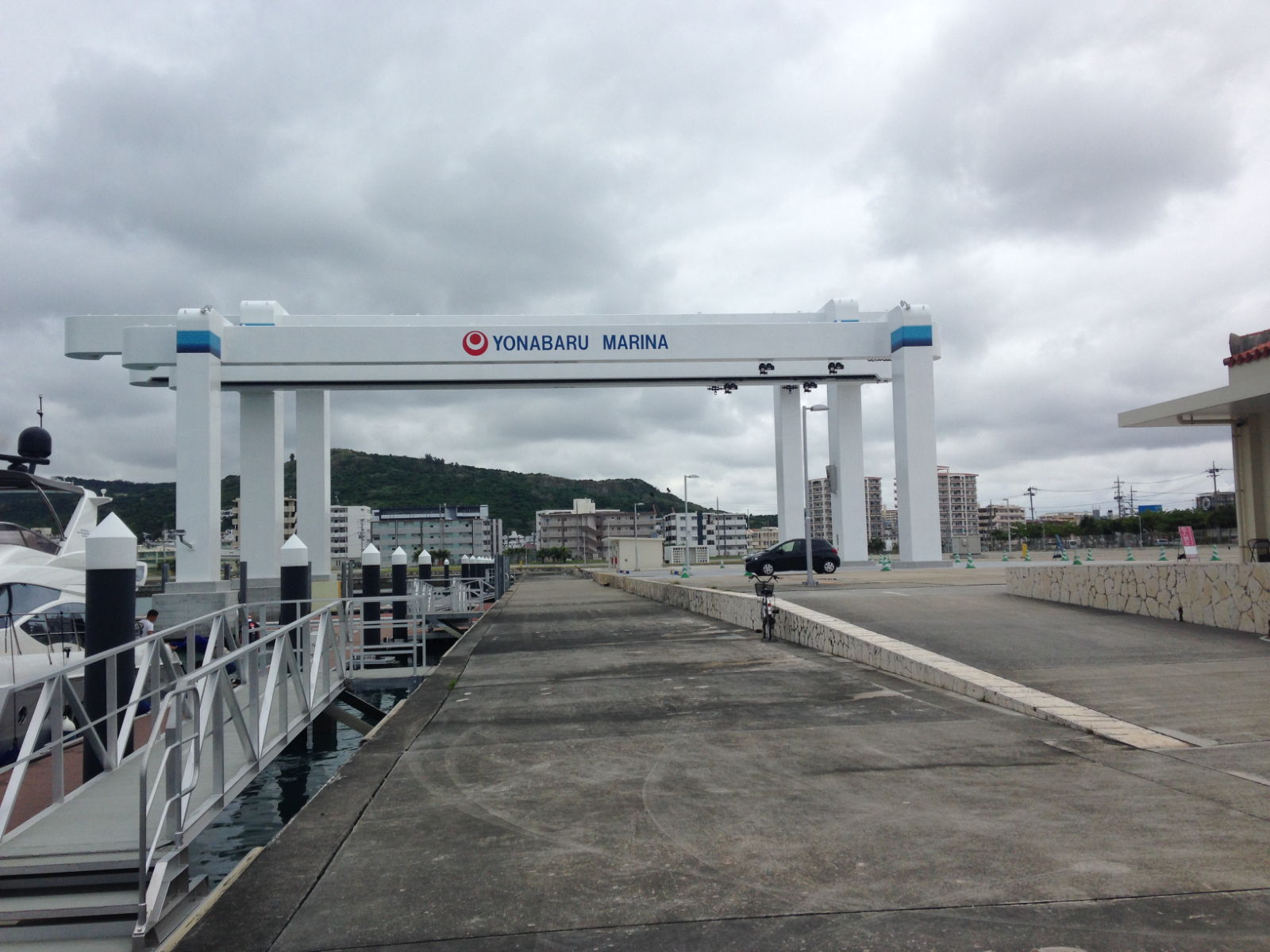

Yonabaru town was fairly unremarkable but it had everything we needed. The land adjacent to the marina is reclaimed and everything has a newly-built look to it. A wide river runs through the middle of the town and it’s notably larger than Ishigaki. In the supermarket I spent a lot of time scrutinising tins and packets trying to work out what they were, or contained. I had downloaded a couple of apps before we entered Japan that were supposed to translate kanji phrases from pictures on an iPhone. I wasn’t surprised when they didn’t really work. Paul was game enough to buy something different – and it turned out to be a battered sausage on a stick! Back at the marina, Paul went to enquire about wifi at the office and returned to tell me that the manager had been in conversation with a journalist about our trip and plans and wondered if we’d be interested in being interviewed. We planned to be out all the next day visiting the city of Naha so we’d miss him unfortunately 😉

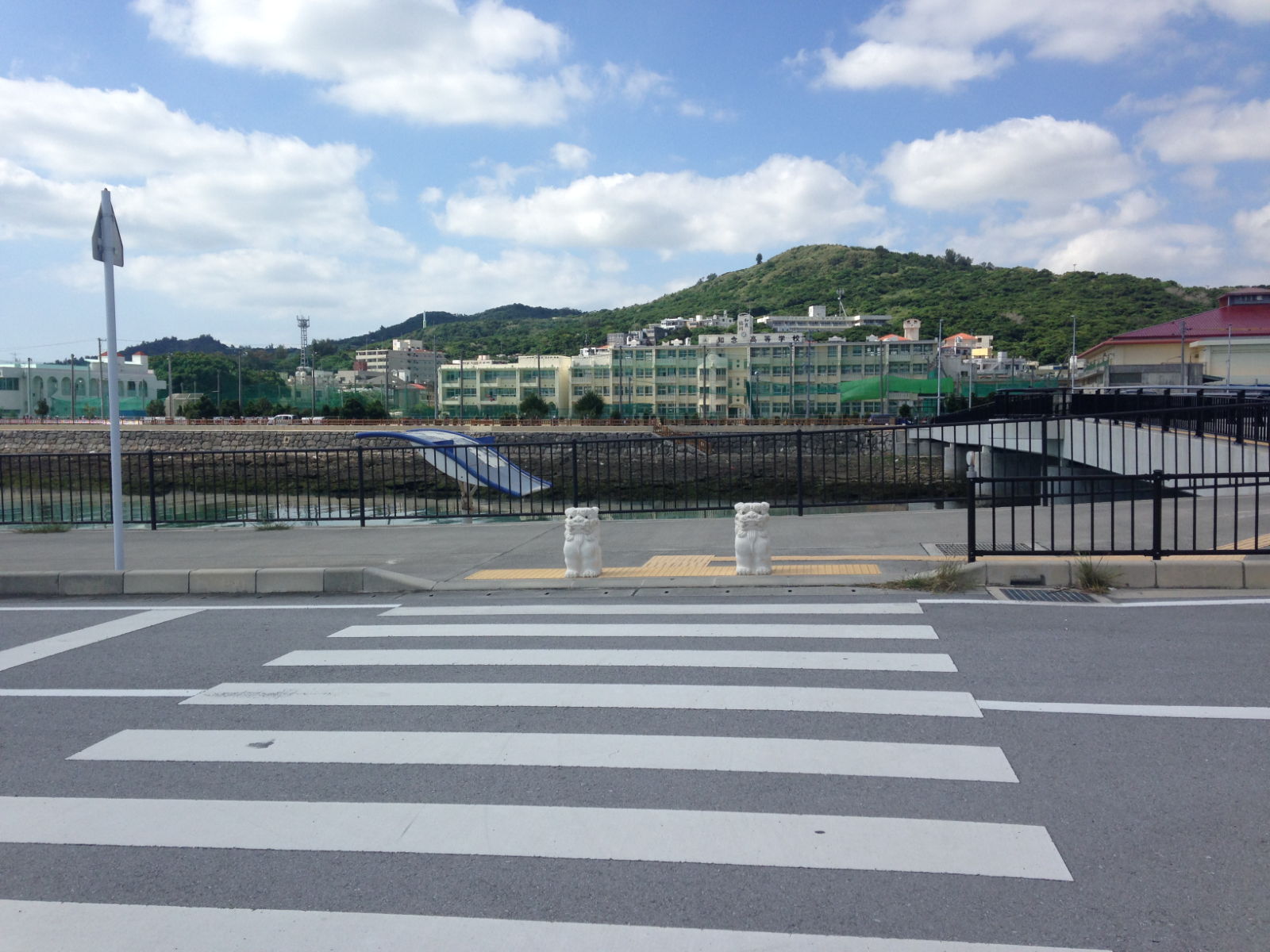

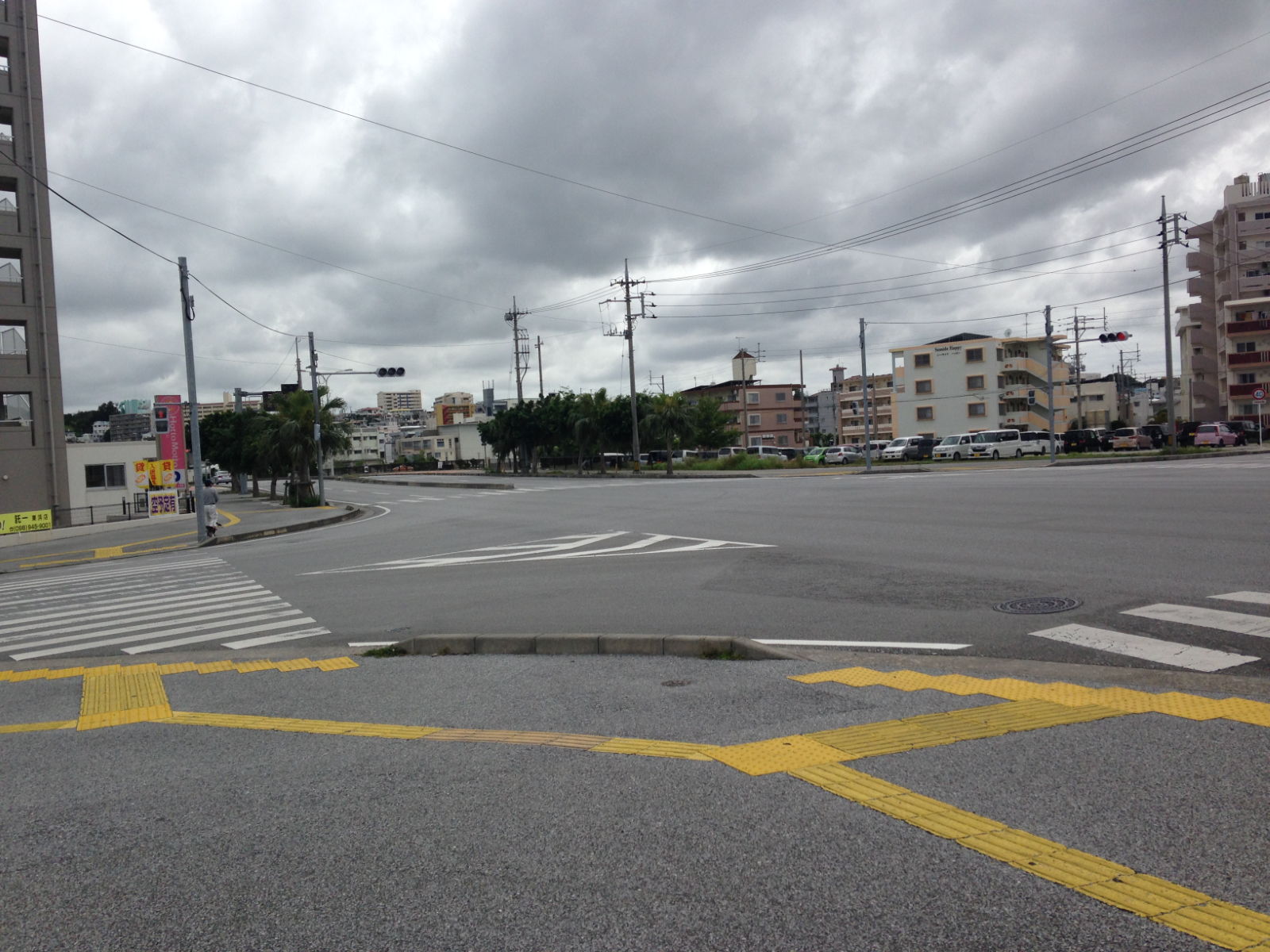
Naha, the capital of Okinawa is a big, lively city which is still home to thousands of US servicemen and their dependents after the post-war American military presence. My guide book informed me that there is a vast selection of army surplus junk such as bullet and shell casings on sale in the centre. We never saw or looked for any of that, or the ‘boisterous nightlife and busy red-light district. Our trip began with some perplexity about how to get there. A plan to simply find a bus stop and get on a bus to Naha was thwarted when we couldn’t find a bus stop! Paul asked a man who was walking nearby and after a brief conversation, he insisted on taking us there. It was so kind of him and he wouldn’t accept any money for the journey. I have a feeling he was chuffed about our plans to visit the castle there because he seemed very proud of it. He dropped us very close to its entrance, with hopes that we had a lovely day.
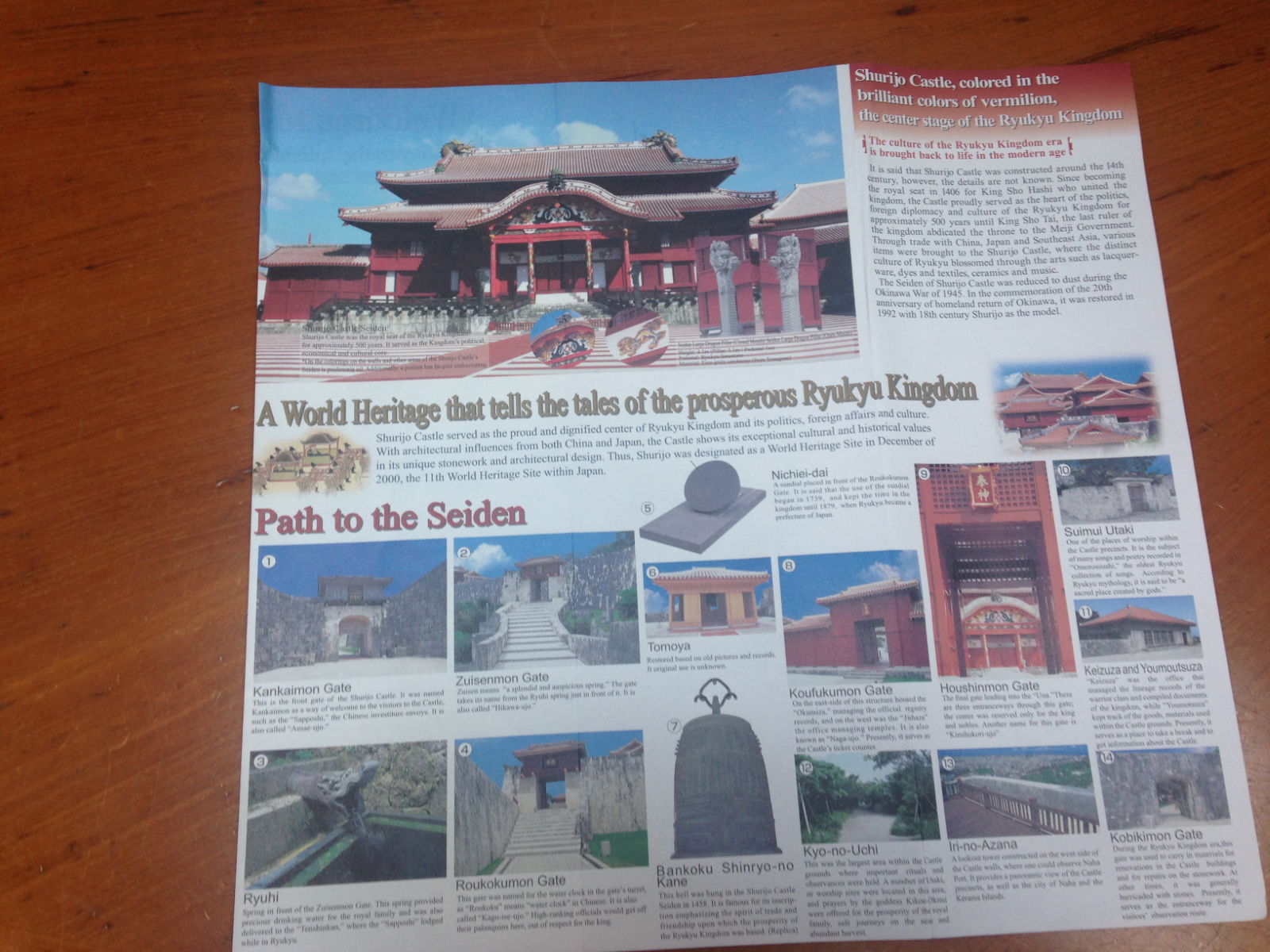

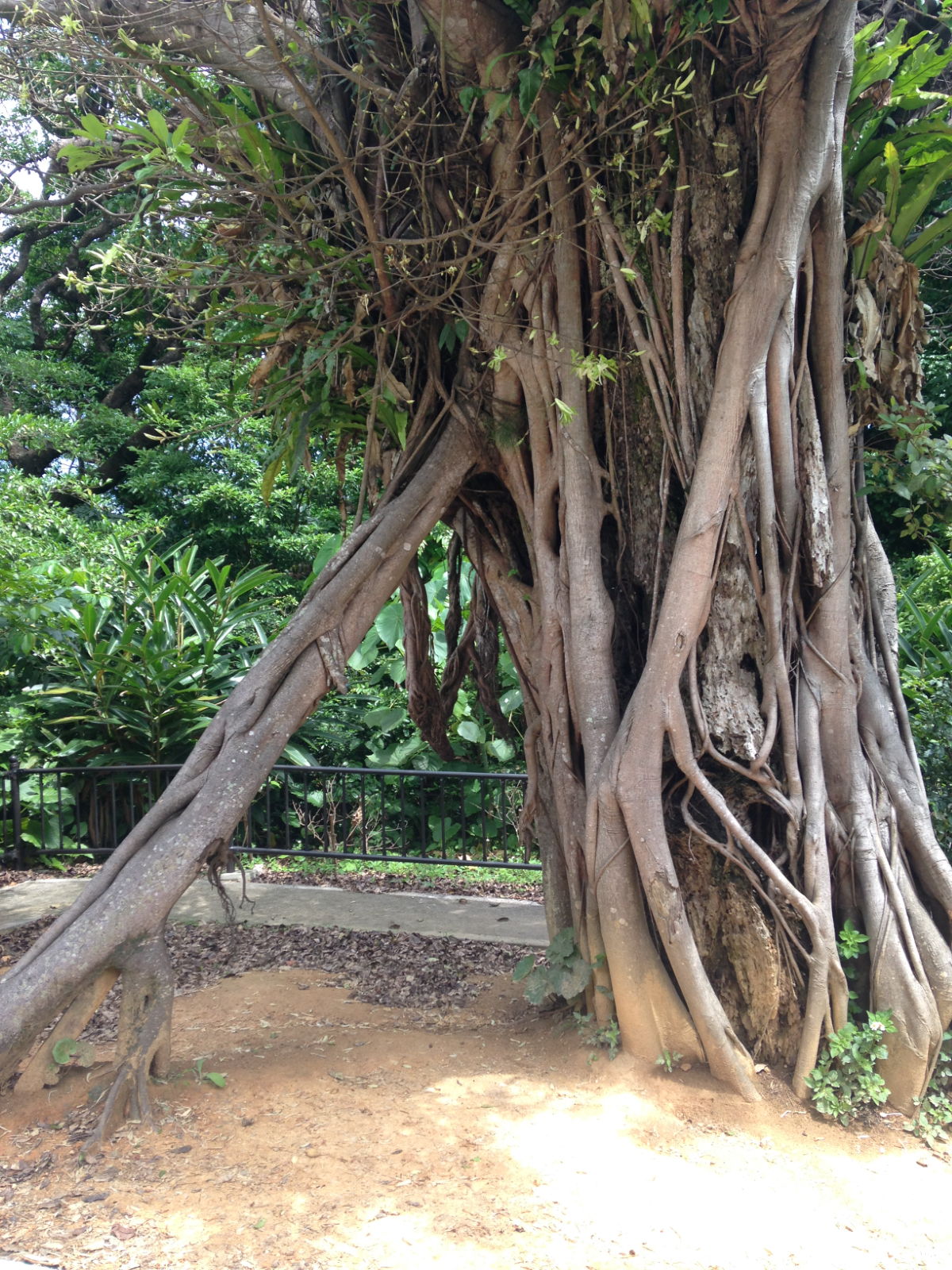
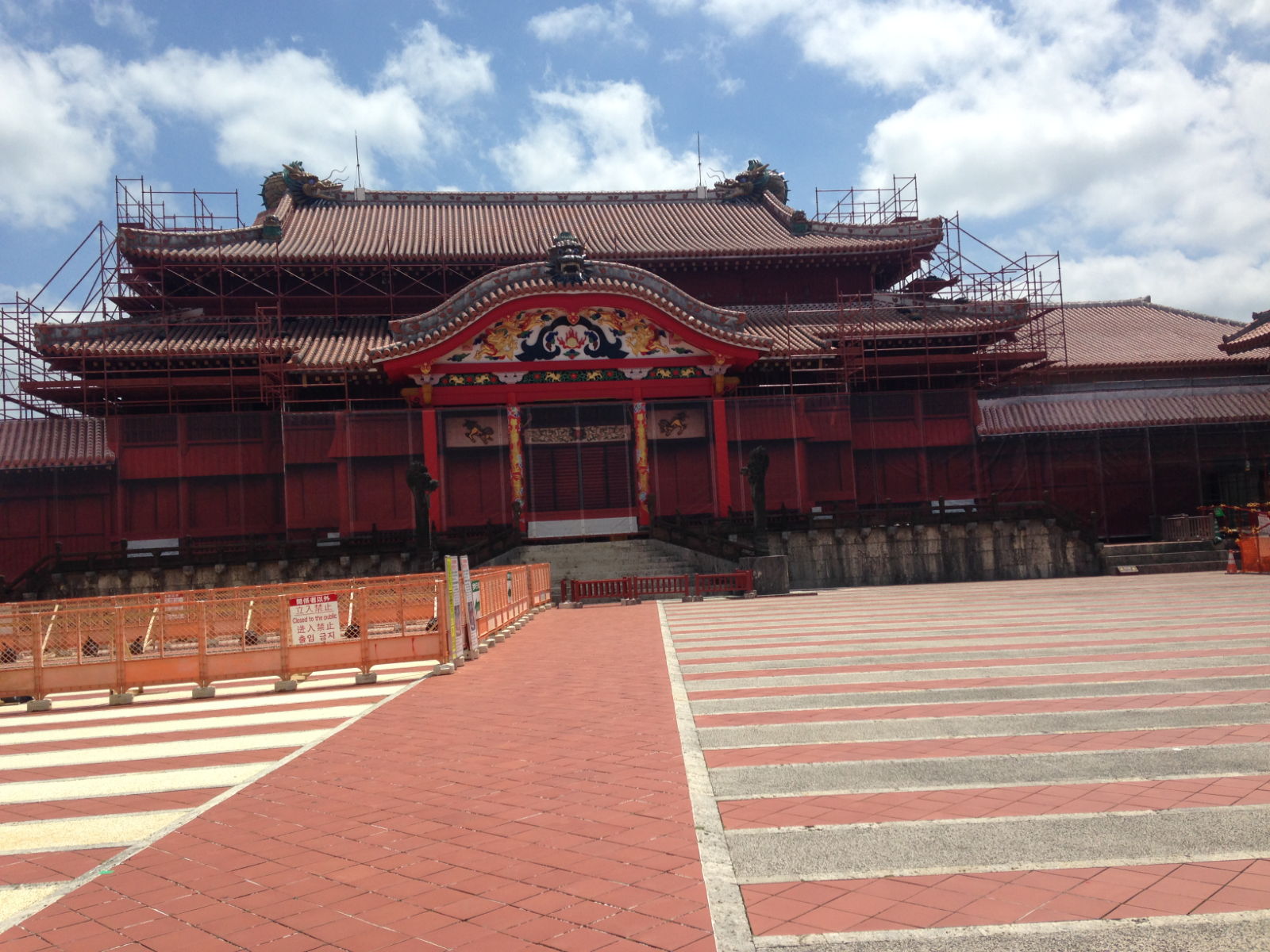
The castle resembled a Chinese temple more than our perception of a castle, which isn’t surprising really since a lot of the architecture and culture in Japan is hugely influenced by the Chinese. The info leaflet we’d brought stated that the original castle MIGHT have been constructed around the 14th century. The details aren’t known but for approximately 500 years it stood on the hill as a centre for politics and foreign diplomacy until it became a casualty of the Battle of Okinawa. When the islands of Okinawa were returned to Japan in 1972 a decision was made to commemorate the 20th anniversary by restoring the castle using 18th century Shurijo as the model. I was beginning to get the idea, which was confirmed once inside with the use of words and phrases like ‘reproduced’, ‘replicas’ ‘based on’, that this was a representation of a castle rather than an original one. Some of the interior rooms looked like empty Ikea showrooms. Still, they had done a good job of reconstructing it as a whole, and the grounds were beautiful. It was worth the visit – pics below taken where we were allowed to.
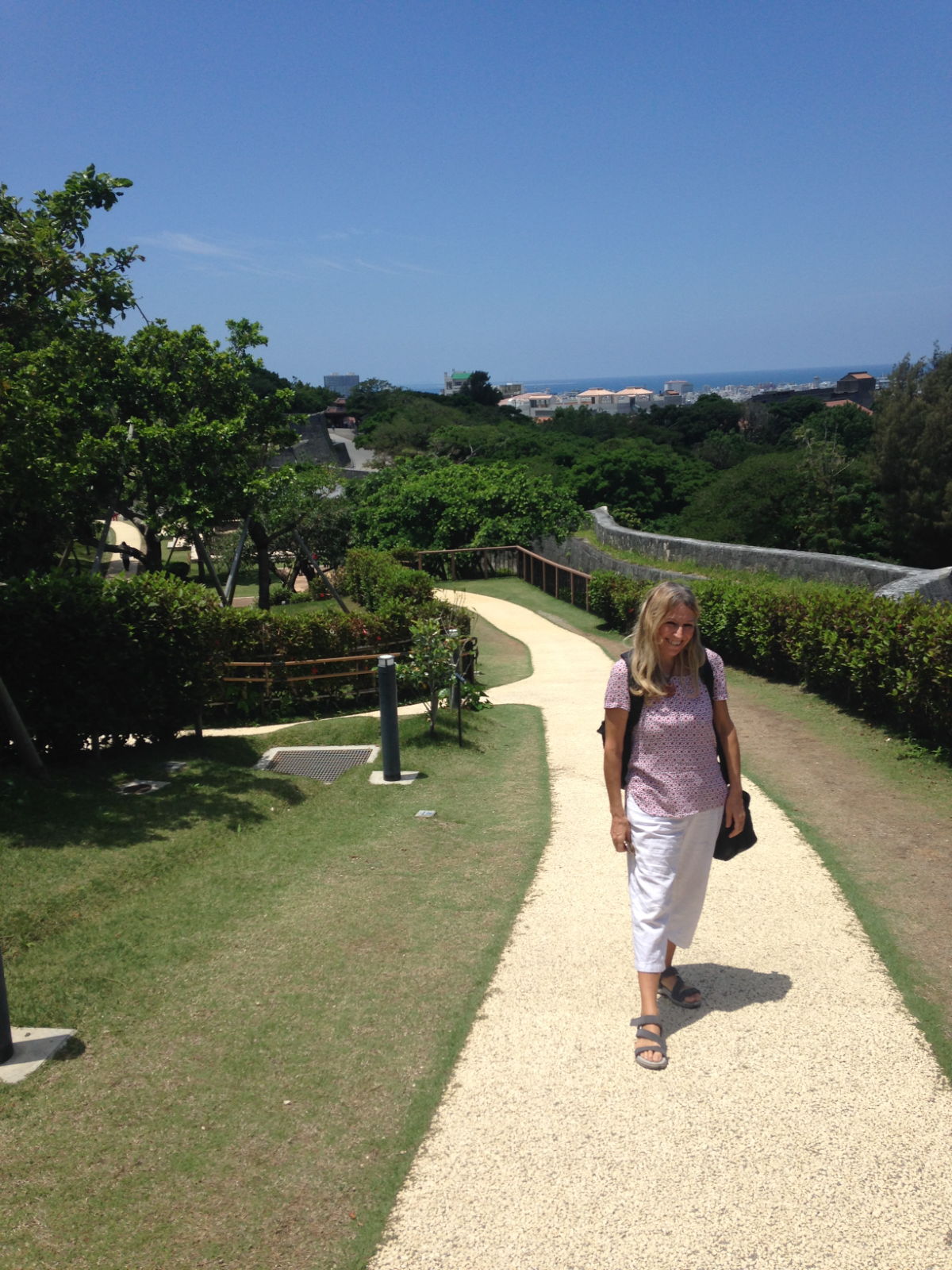

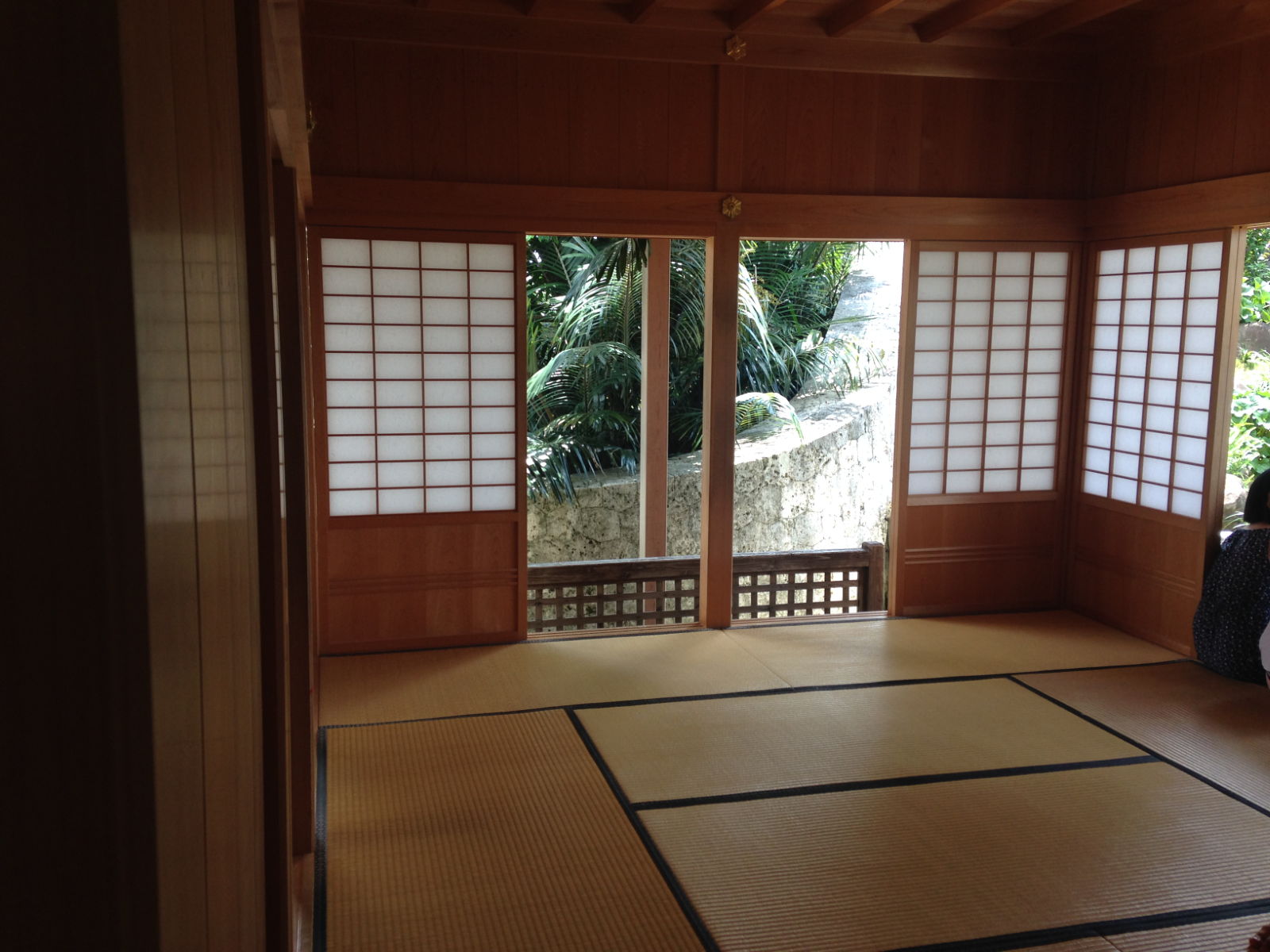

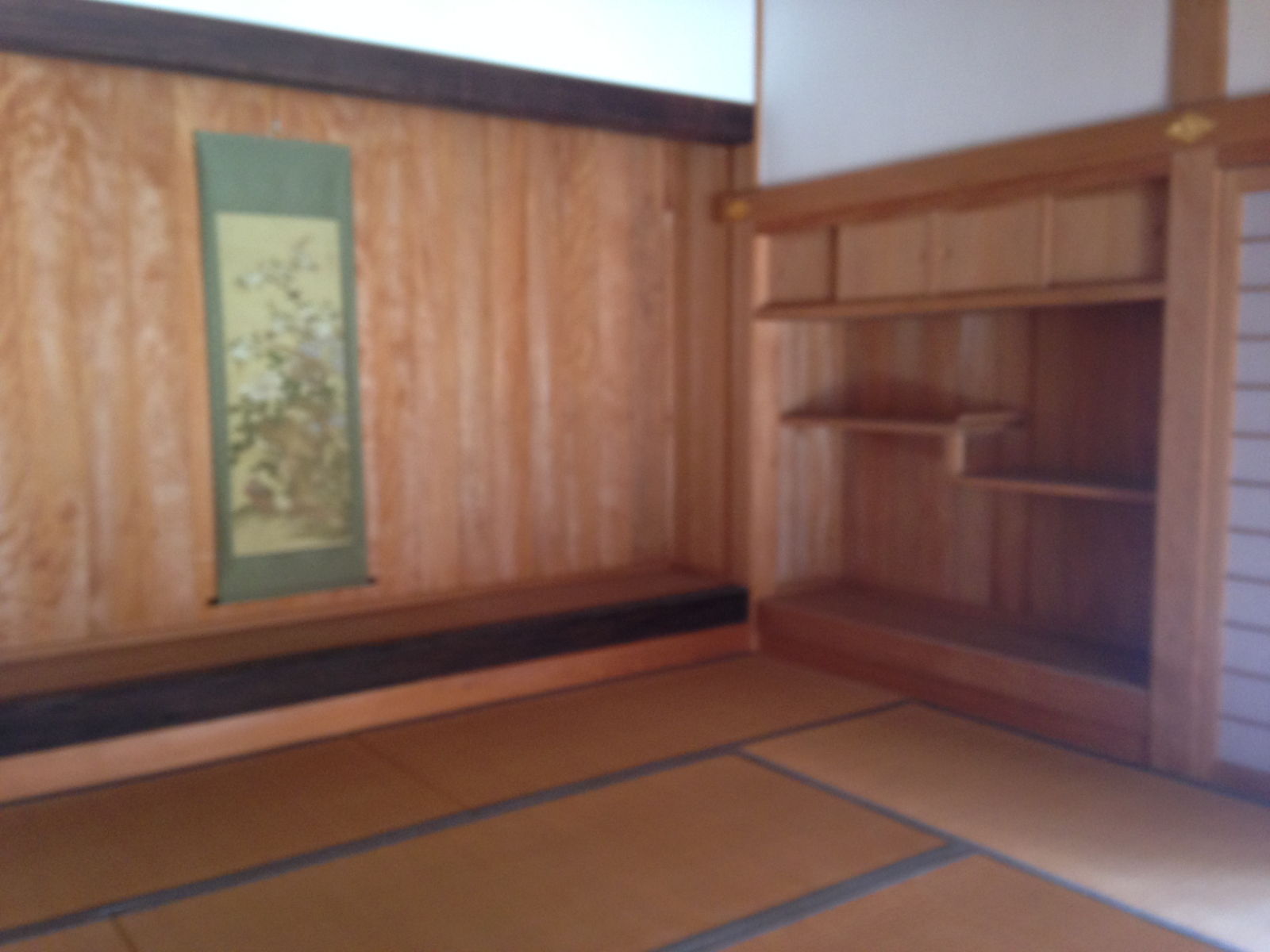
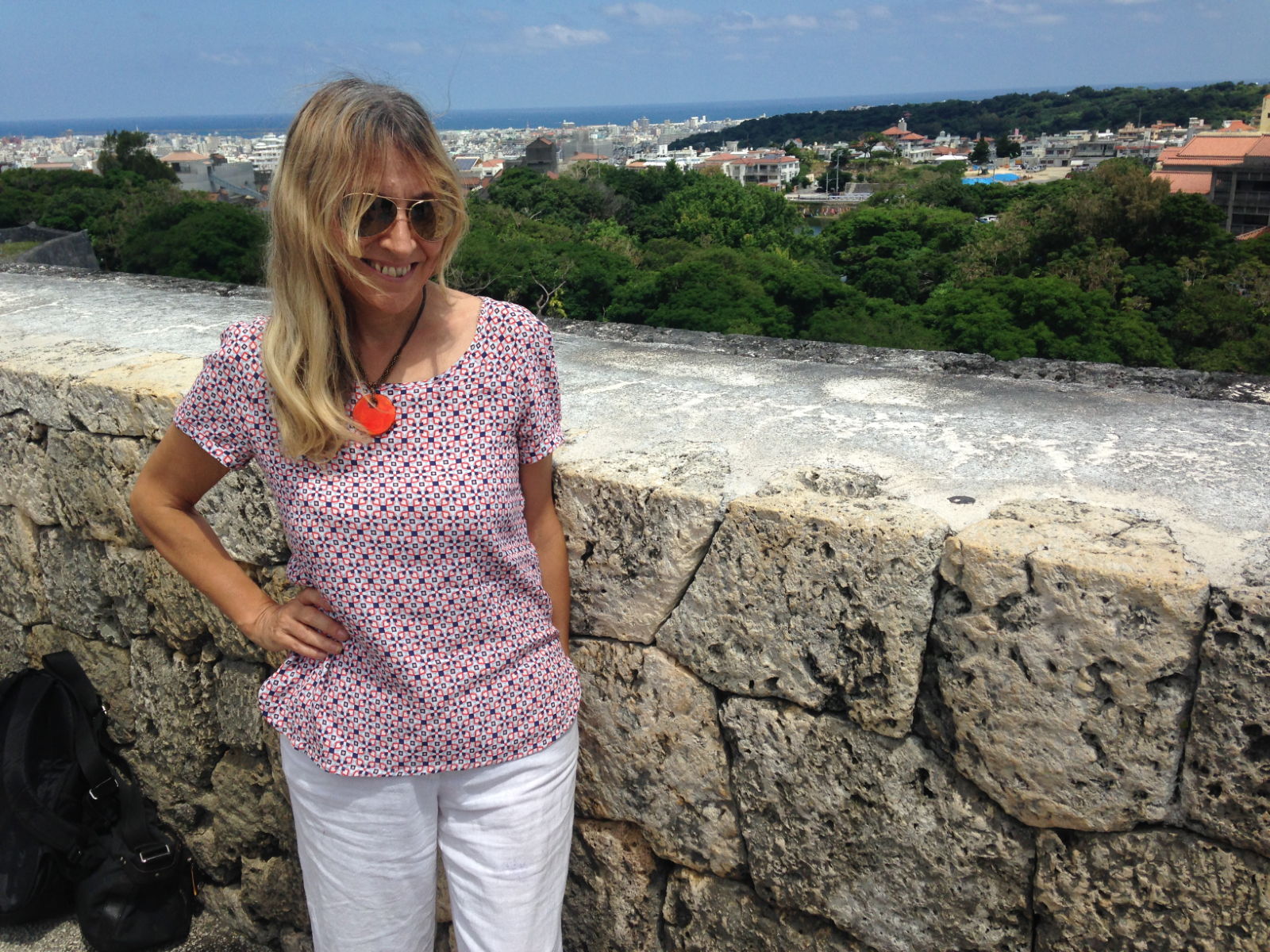

Some excitement for me after that. We went on a monorail to get us to the centre of Naha. I have never been on one, apart from the ones in theme parks and airports. This one was great; so smooth, fast and efficient as it transported us high above the buildings.
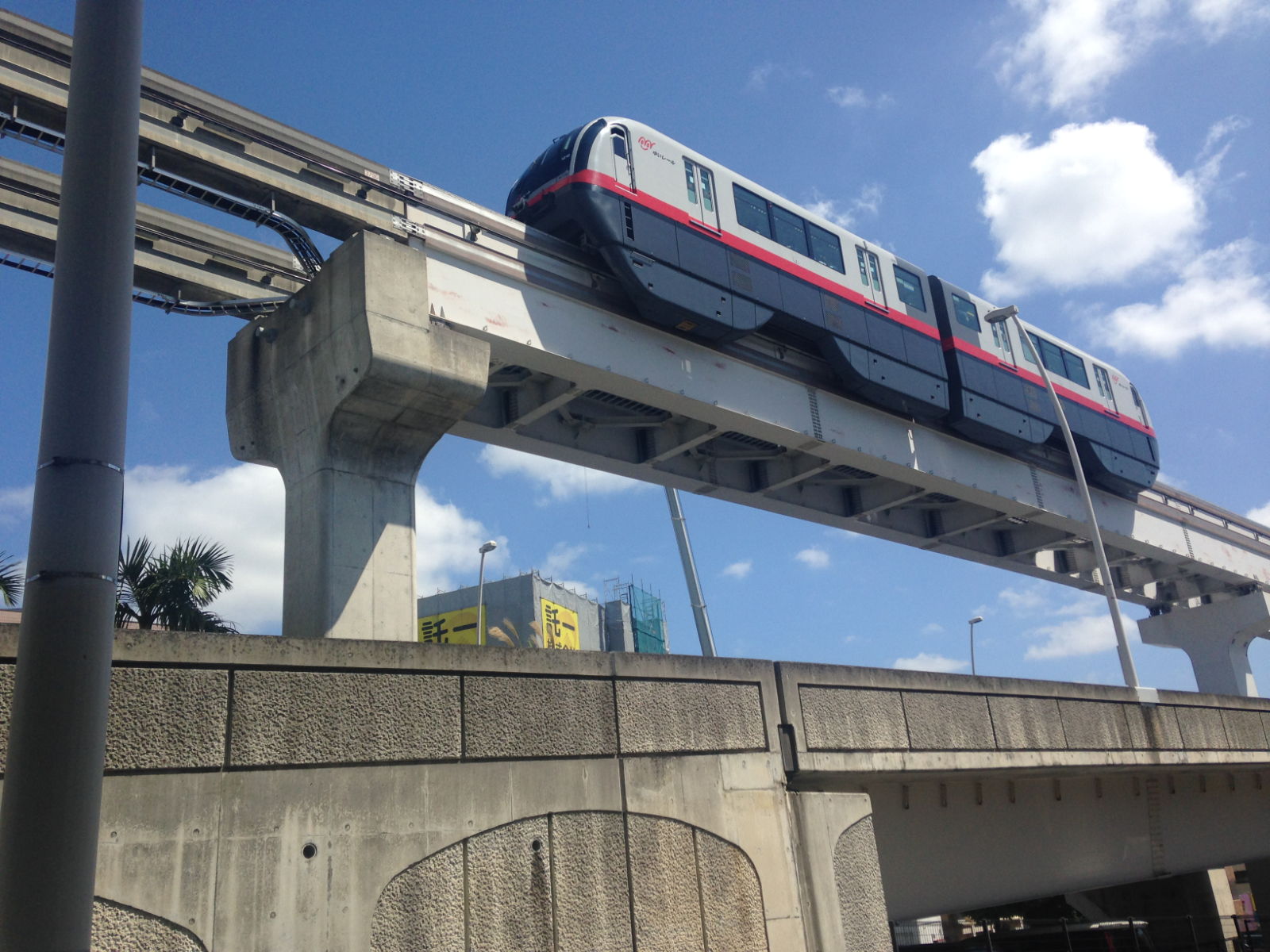
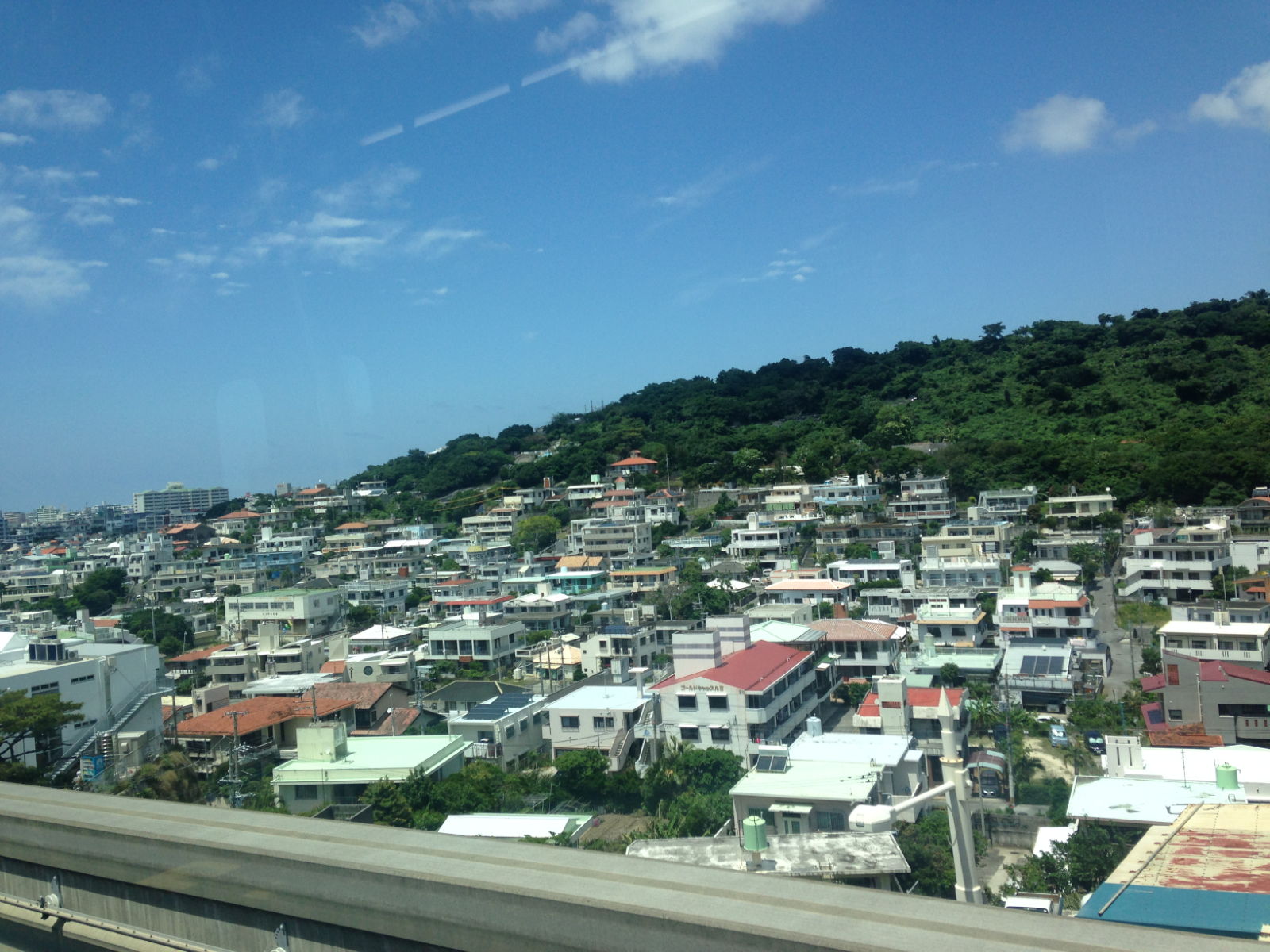

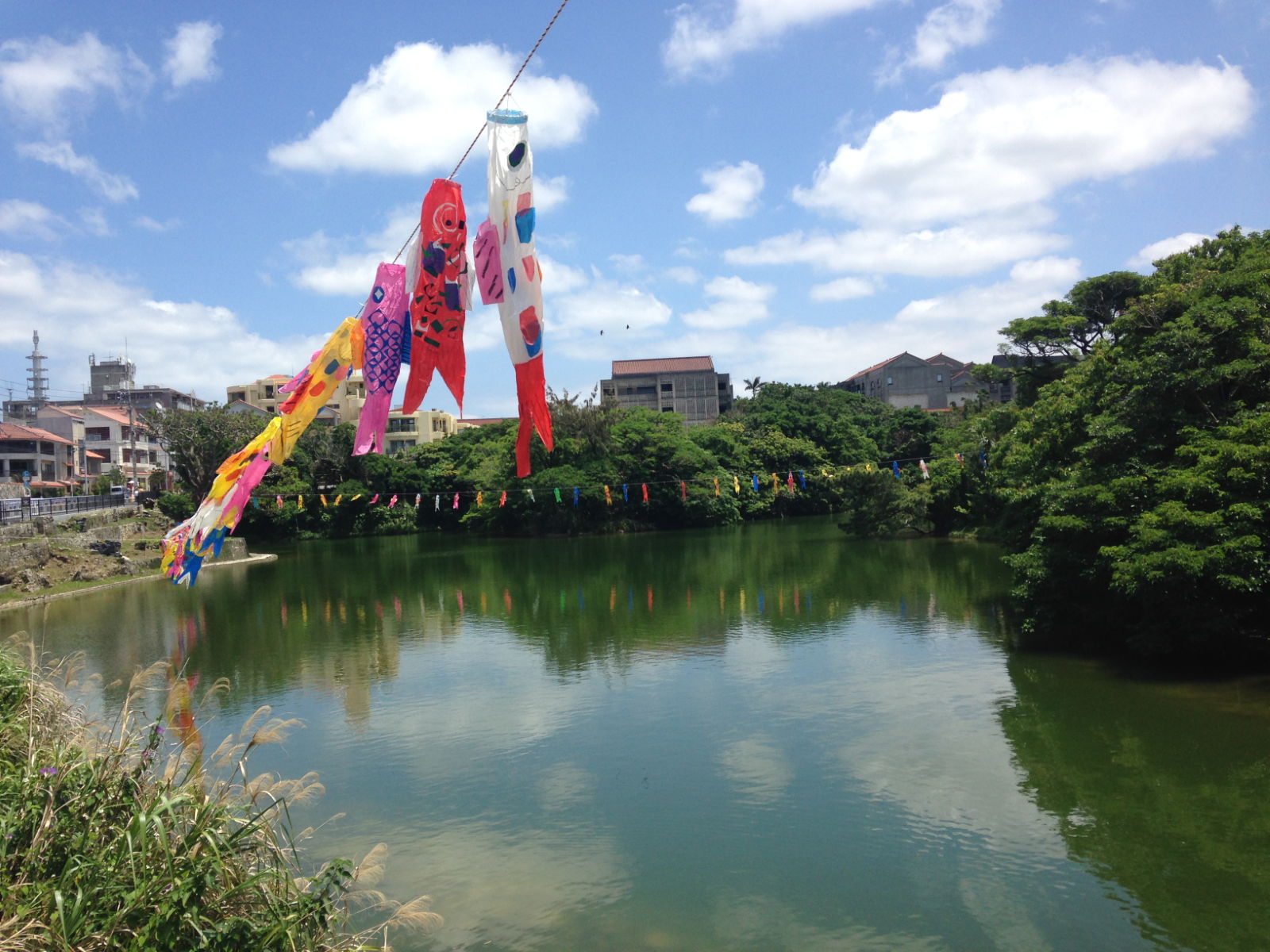
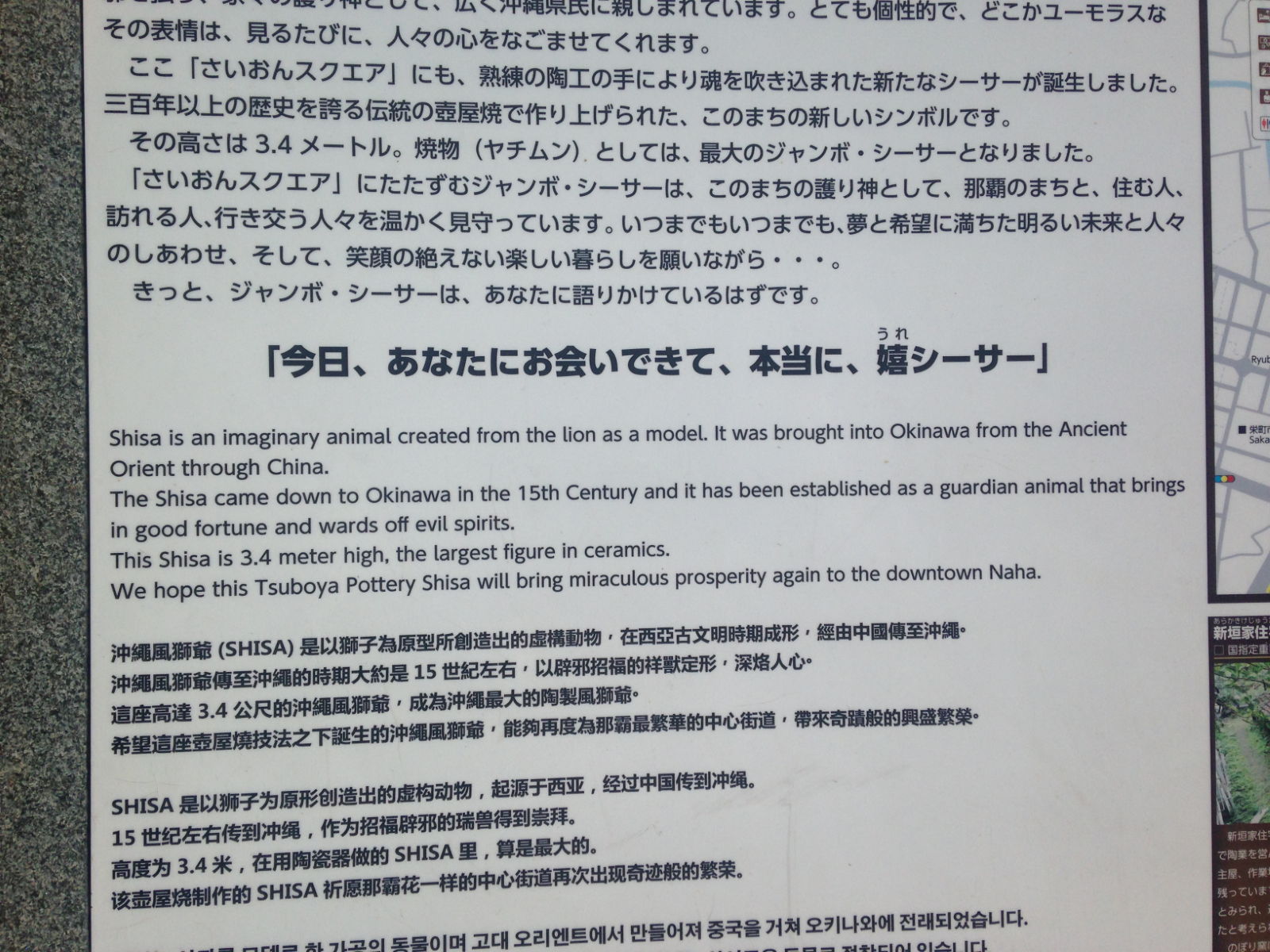
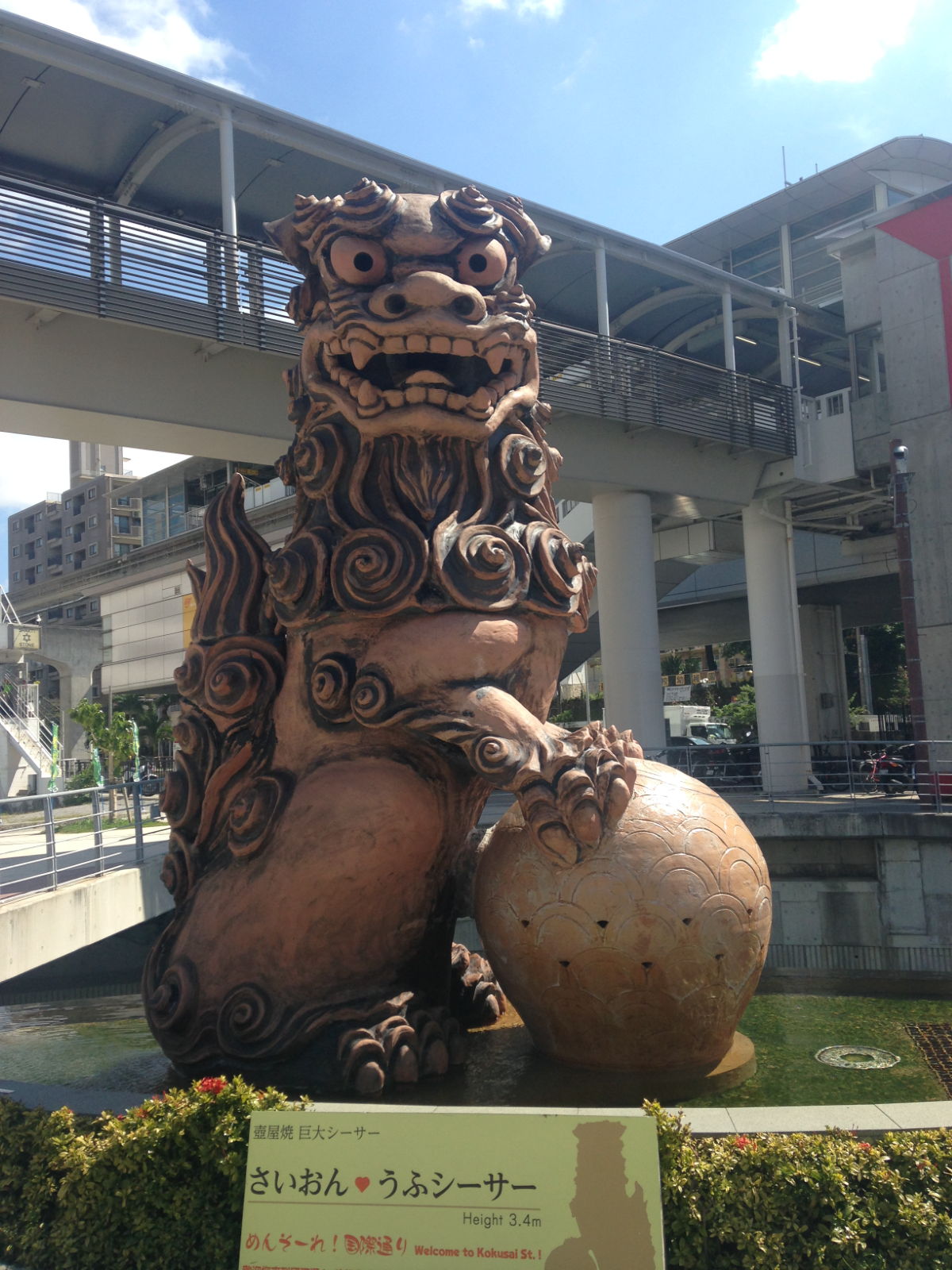
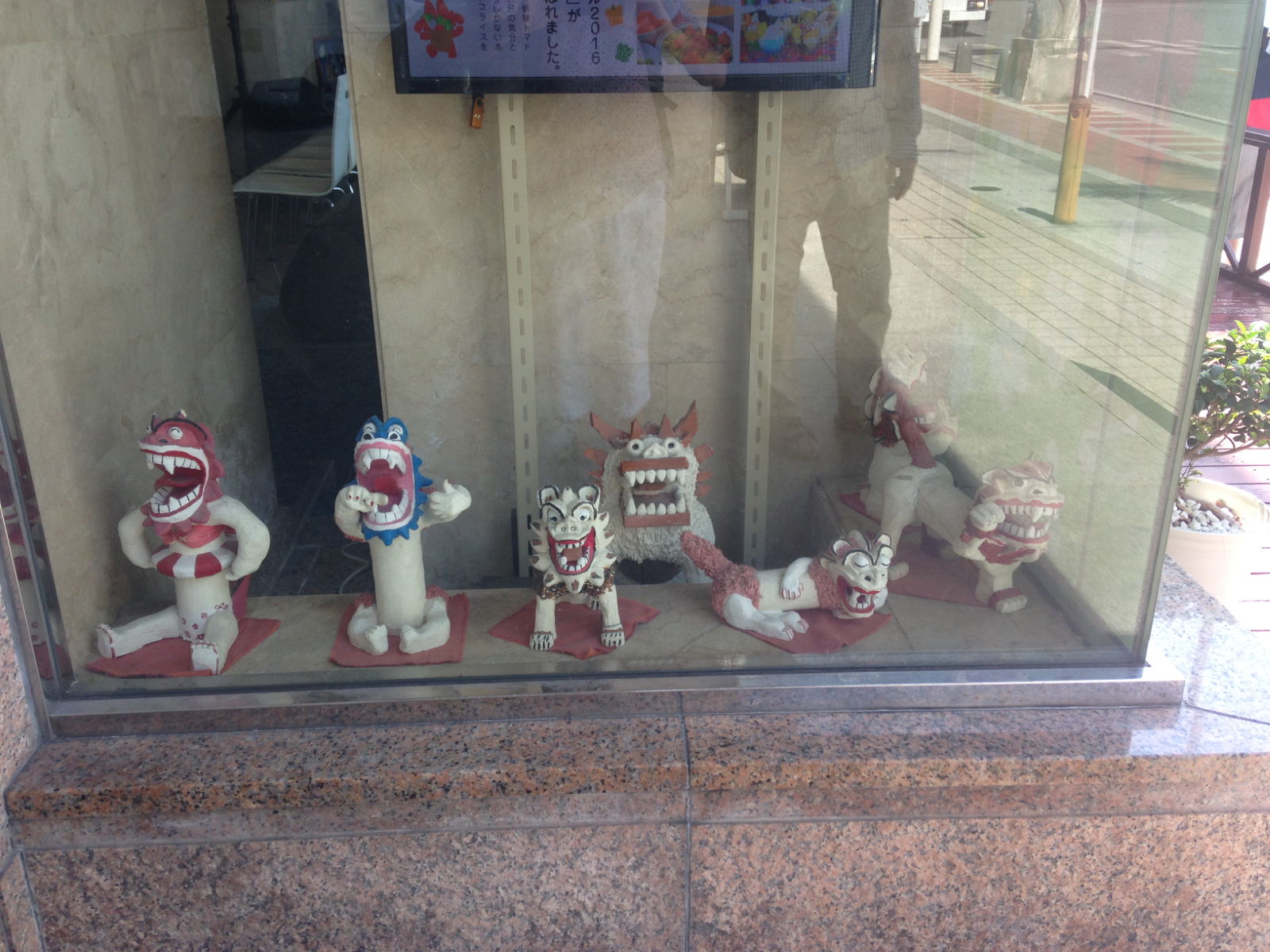
We got off at a stop recommended to us by a guy we asked in a tourist office. He must have had us down as wealthy because we found ourselves in the heart of a designer mall, which was eerily deserted. We passed shop after pristine shop; Fendi, Prada, Marc Jacobs, Cartier and the like, with immaculately coiffured staff standing behind counters with nothing to do. Nothing for us there so we went in search of some lunch. A Subway inside a bookshop made for a pleasant lunch break and a chance to consult our maps and guides. Naha’s main street was recommended as a must. Named Kokusai Street, it stretches for 2 kilometres through downtown Naha and boasts restaurants, cafes, bars, souvenir shops, boutiques and department stores. It had all those and more, and reminded me of The Lanes in Brighton. We visited the huge public market too and by 4pm I was in need of sustenance in the form of wine.
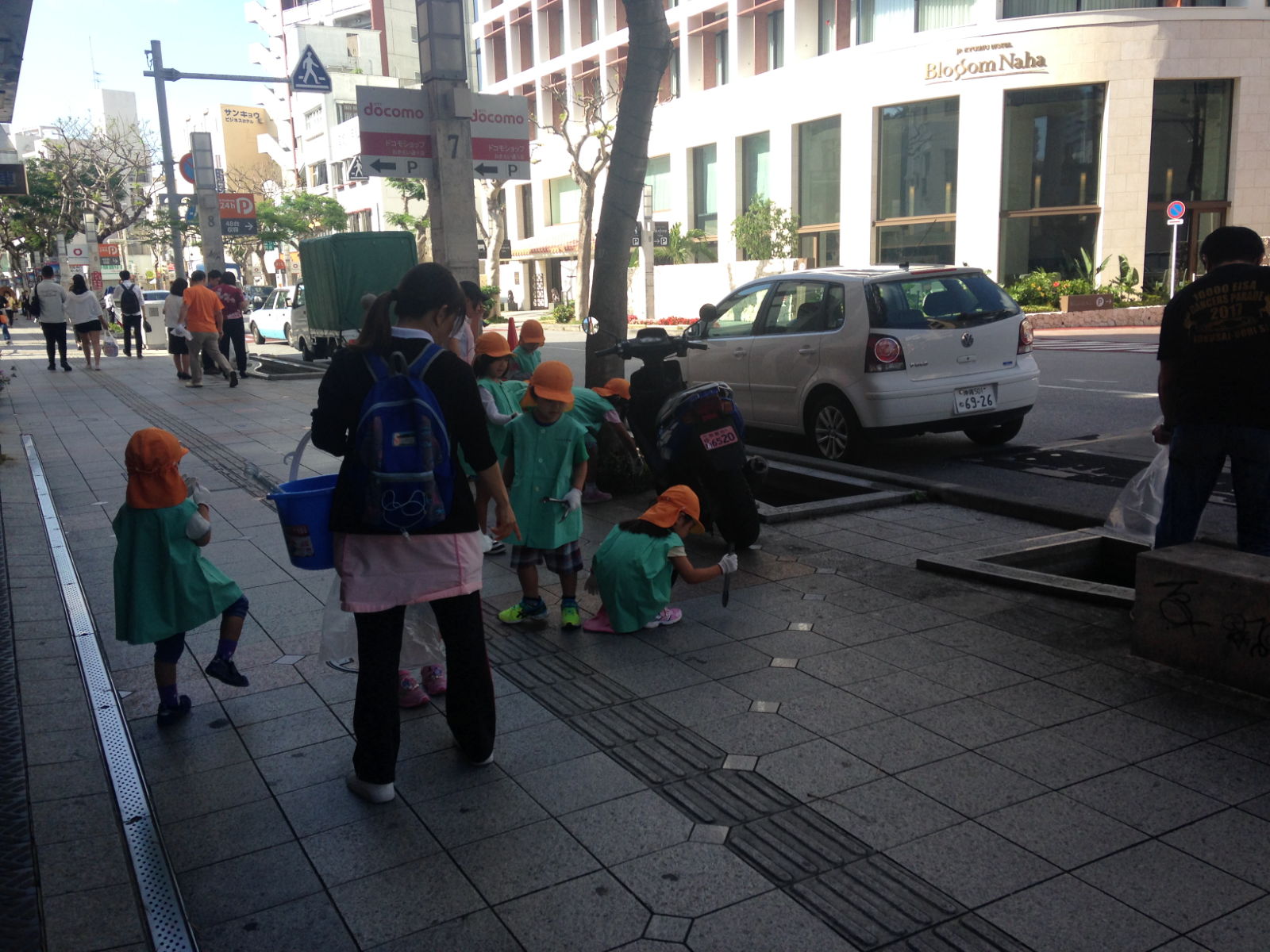
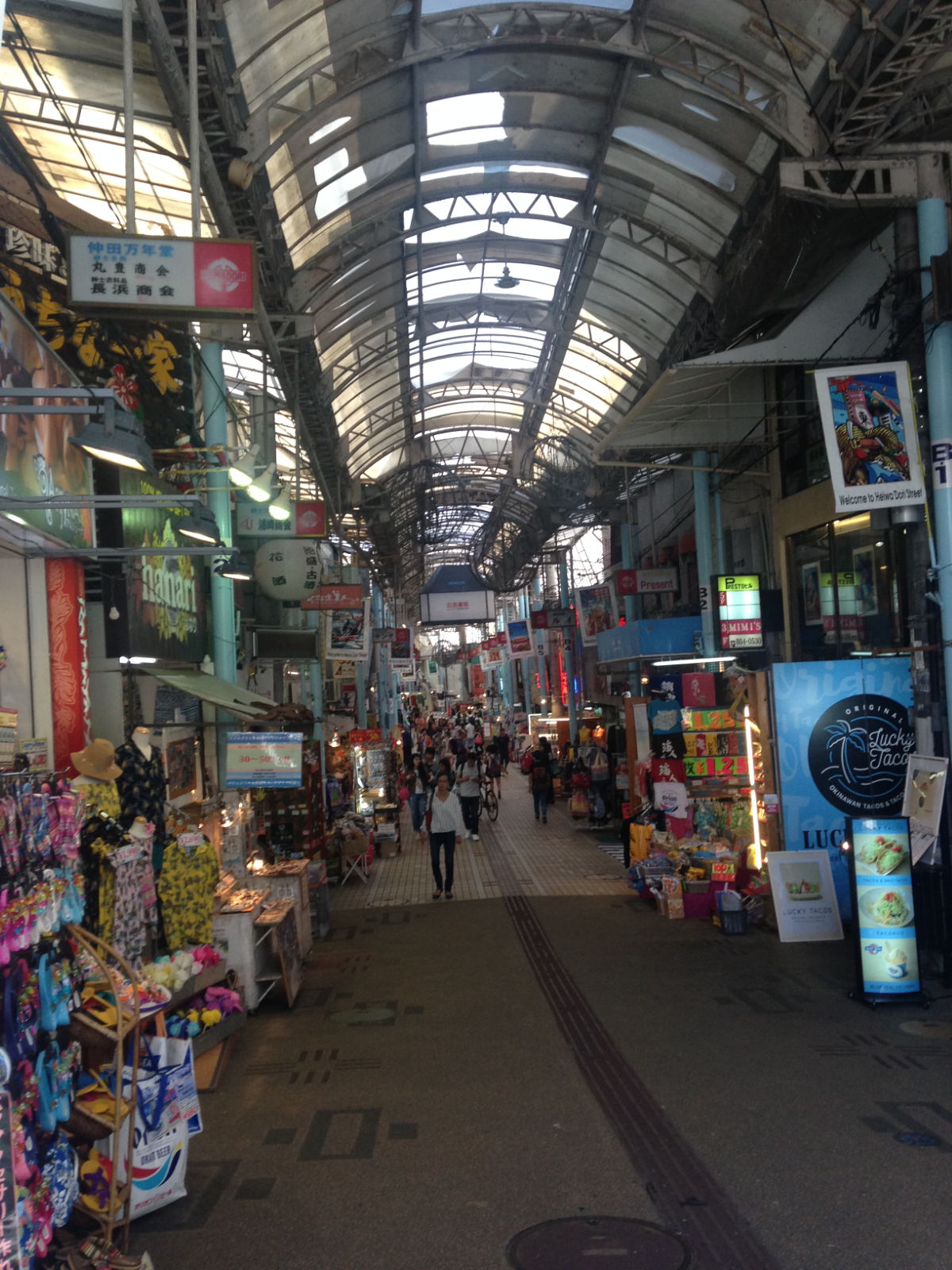

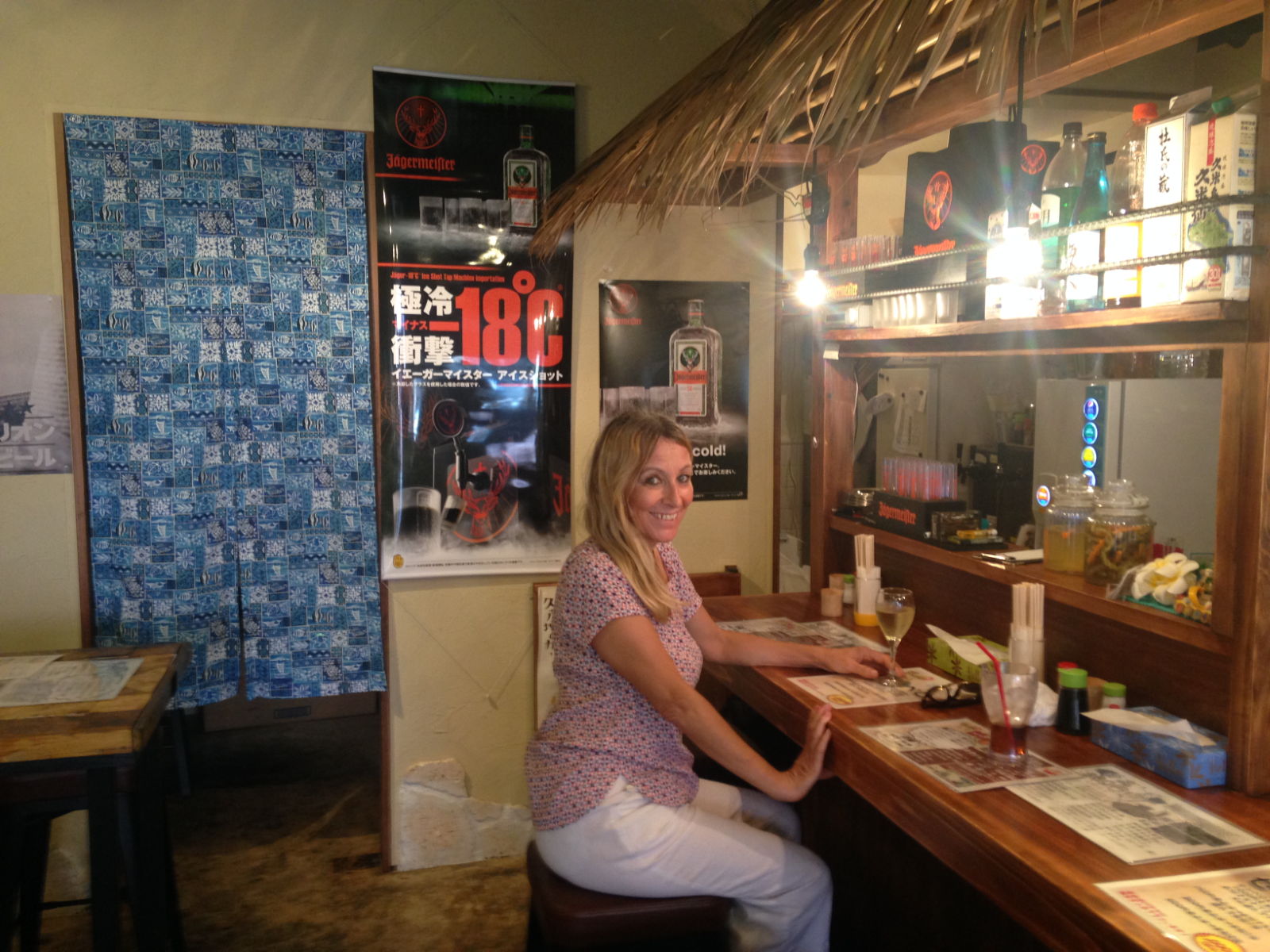
Getting a bus home proved to be something of a challenge. The internet provided info regarding numbers and routes but we stood at the wrong stop for ages before we realised. Once we found the correct one a helpful lady told us the procedure for buying tickets. You take a ticket when you get on the bus and the zone you’re in is stamped on it, than as the bus travels into new zones, the price on the bus display changes. When you get off, you put the fare currently showing on the display into a machine that counts the coins. We’d never have worked all that out without her help! People really are very willing to help in Japan.
We left Yonabaru on Friday 27th April for a three day passage on the East China Sea to Miyanoura on the island of Yakushima. An uneventful passage apart from my falling down the steps and first, bashing my knee on the metal coat hooks and then when trying to right myself, with one leg still in the cockpit, slipping again and bashing it on the wooden grab rail. A few swear words were uttered at the ensuing excruciating pain. Nothing was broken but it caused me to limp for quite a while and six weeks later, still hurts at times. It showed me that no matter how complacent you feel about nimbly moving around the boat in rocky conditions, the force of a wave can unbalance and injure the most careful of people. Still, I managed my watches by moving very slowly and sitting still for as much as possible. I did my first night watch in a warm woolly hat during that passage, while the moon was three quarters full and created a shimmering golden path on the surface with a comforting amber glow all around.
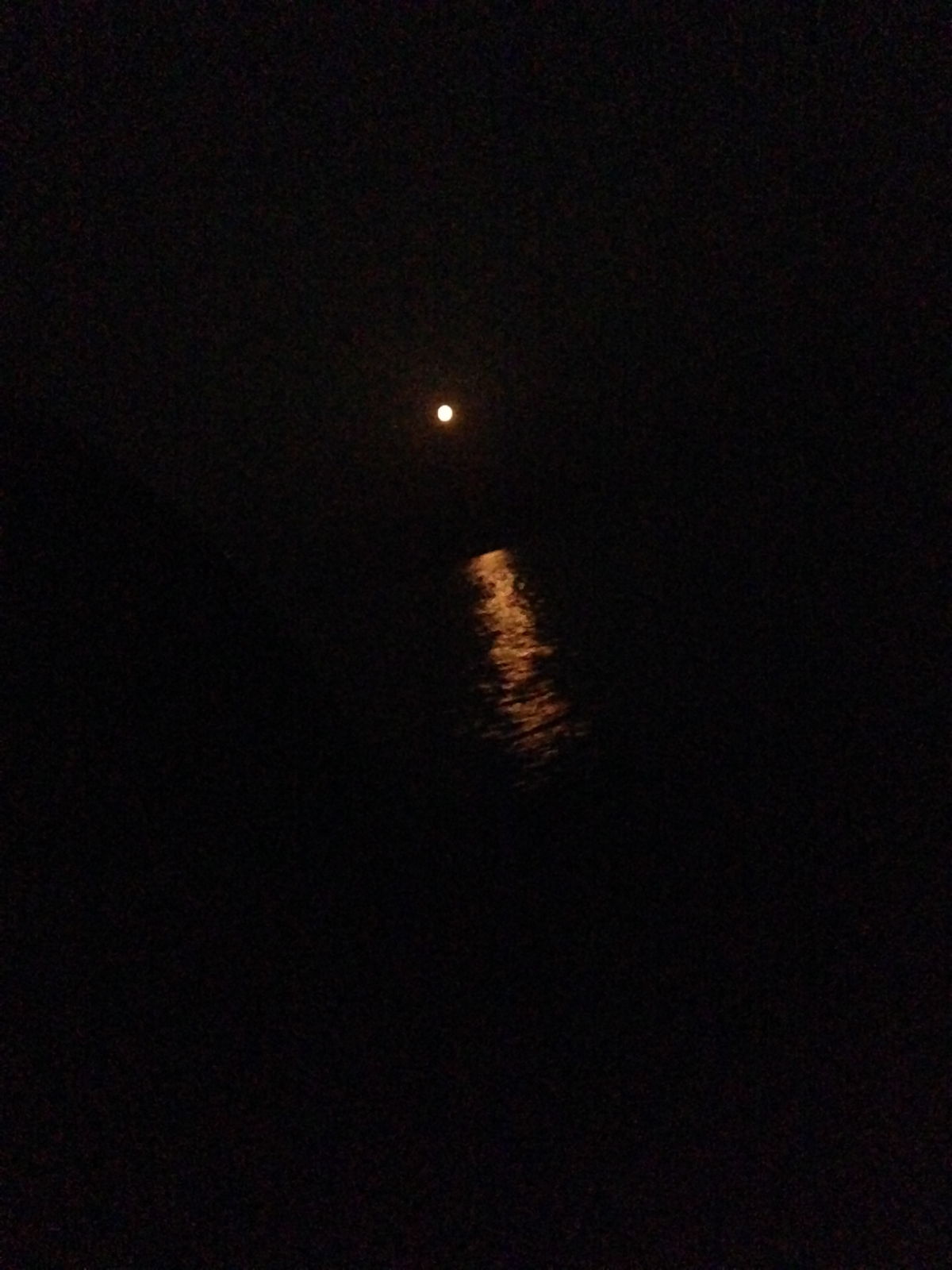
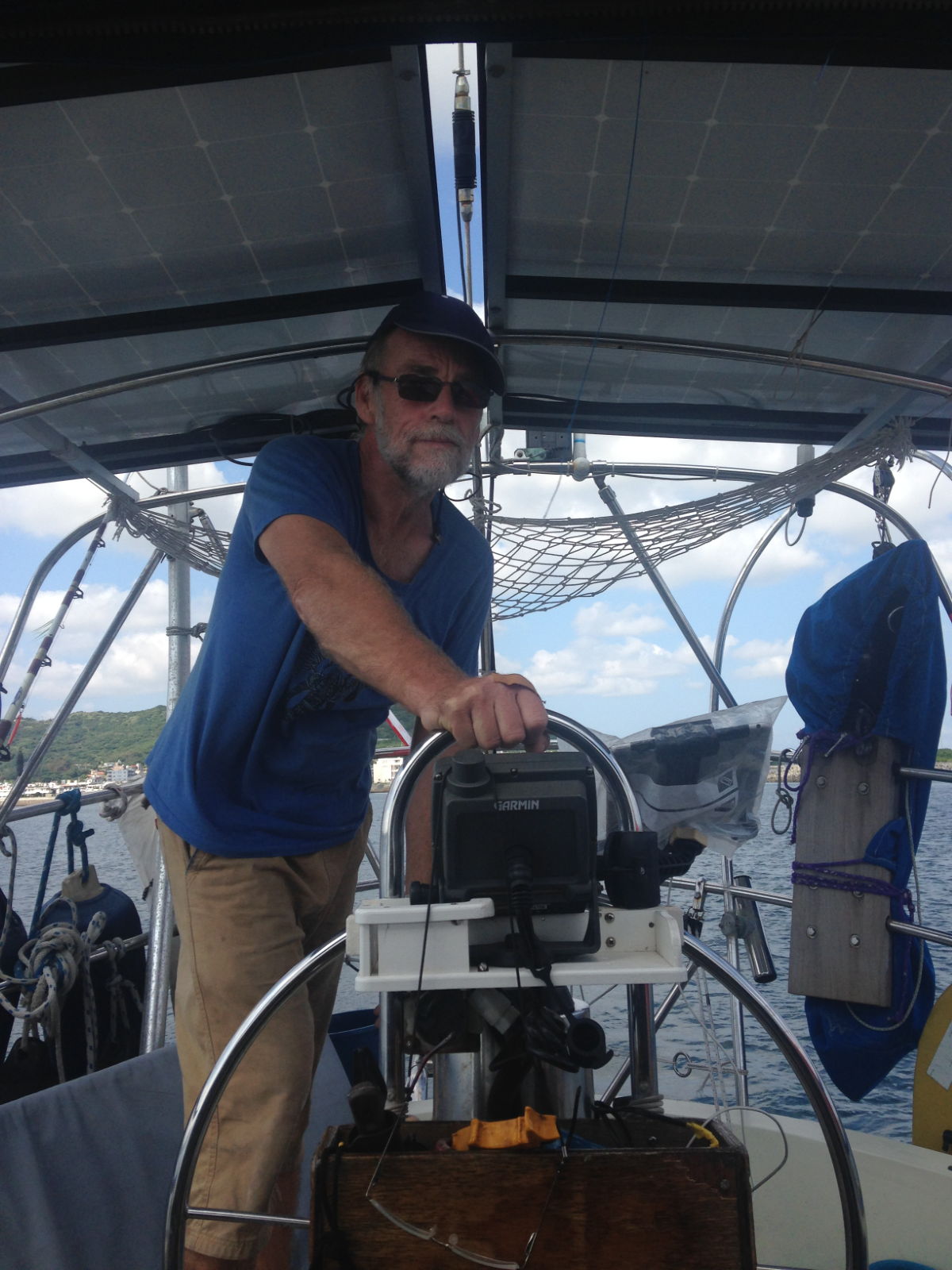
Paul saw a submarine surface during one of his watches – a sight I would have loved to have seen. He said it looked like a black rectangle and seemed to follow us for a time. By chance, several of the books I was reading at the time were all sea-related and one in particular resonated with his description. Jules Verne’s ‘20,000 Leagues Under the Sea’ focuses on the fictional submarine journey of The Nautilus, a vessel used by Captain nemo to take revenge on civilization by ramming and sinking ships. The other books were ‘The Old Man and the Sea’ by Hemingway, about a man who has trouble catching a fish, basically ;), ‘Lord Jim’, a brilliant philosophical story by Conrad, which contains this apt phrase:
‘trust a boat on the high seas to bring out the Irrational that lurks at the bottom of every thought, sensation, emotion’.
Coleridge’s ‘Ancient Mariner’ is a constant reread for me; several of its lines come in to my head in the manner of an earworm, only more welcome. I also enjoyed ‘English Passengers’ by Matthew Kneale, about a voyage to Tasmania in the 19th century. On we went, alternating between port and starboard tacks. Early morning fog and mists made an appearance and reminded me of the autumnal mornings in the UK that I’ve been missing so much. As we got closer to Miyanoura, a huge oil tanker from Singapore, which according to the AIS was ‘drifting under no command’ and should have given way to us, blasted its horn 5 times which Paul explained meant ‘show your intention’ but sounded more to me like ‘get out of my bloody way!’.
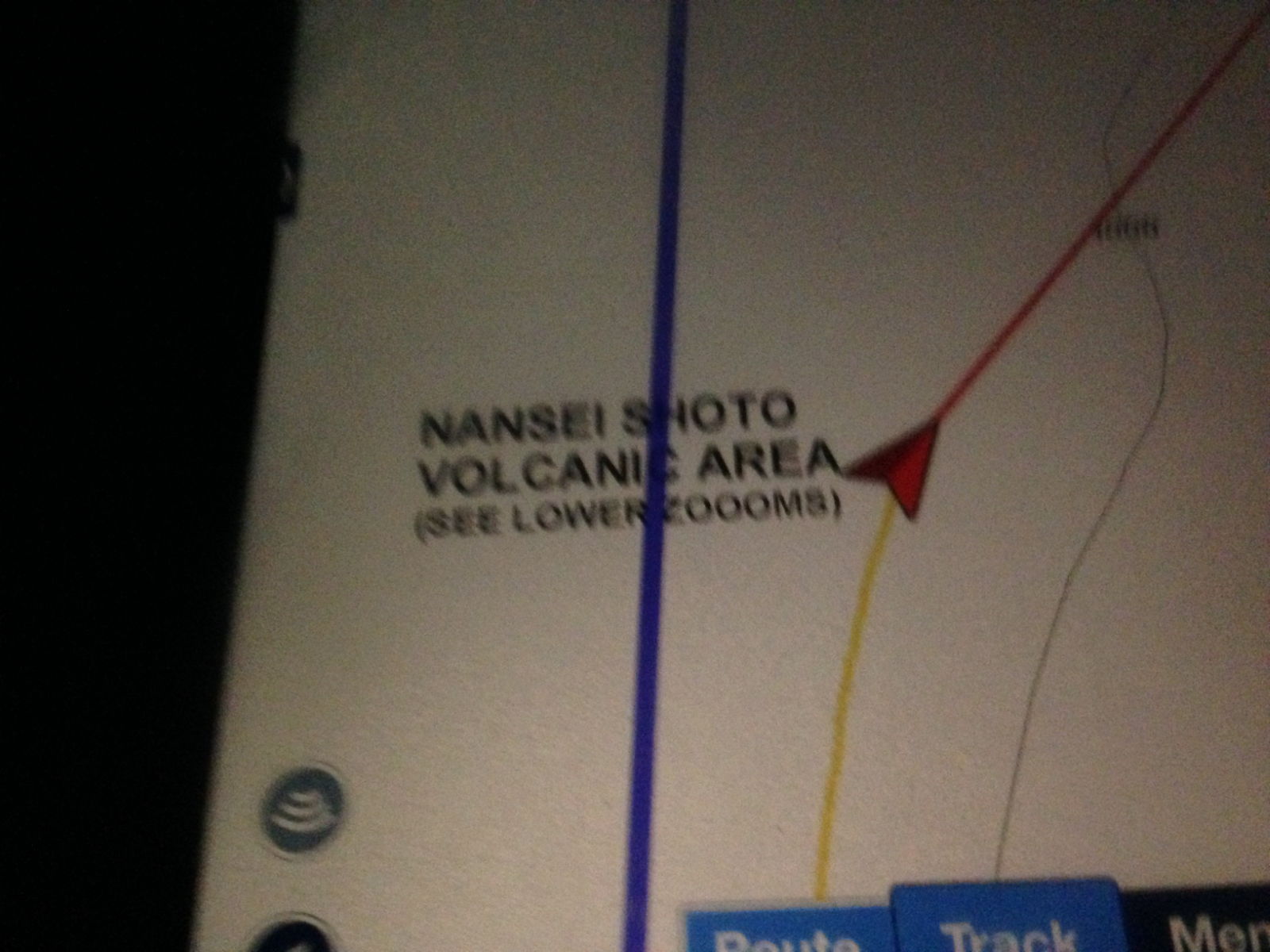
Our first view of the island of Yakushima, on the morning of Monday 30th April was through a fine drizzle of a showery rain and low-lying cloud. This made the mountainous terrain beyond the bay even more atmospheric and attractive to my eyes. Paul was togged up in his oilies and rain pattered on the hatches as we neared the wall we intended to tie to. It turned out to be too precarious for the boat once we were tied to it. There was a lip jutting out that would bash the wood at low water so Paul went off to investigate other options and we moved to the harbour wall just round the corner.
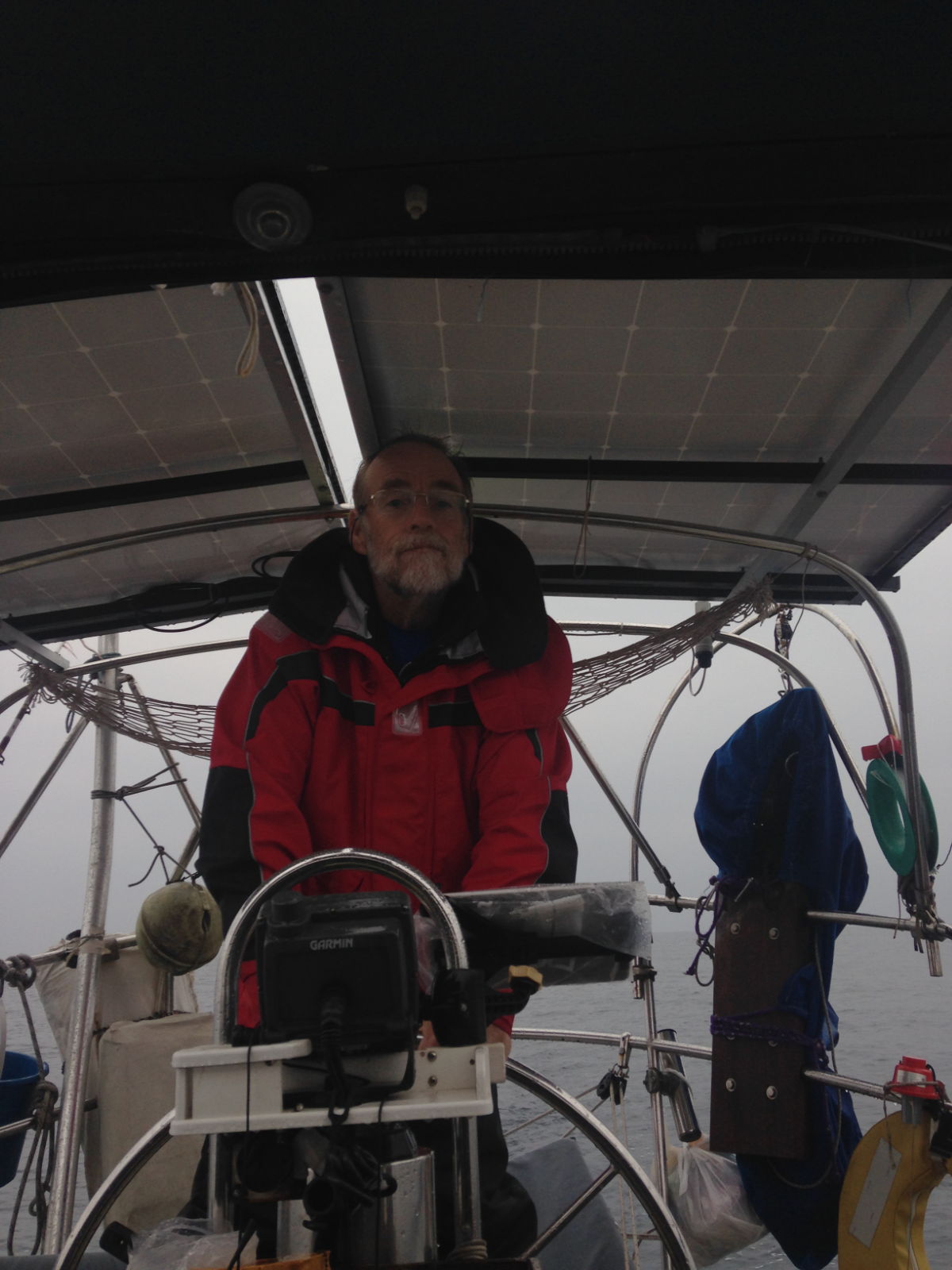

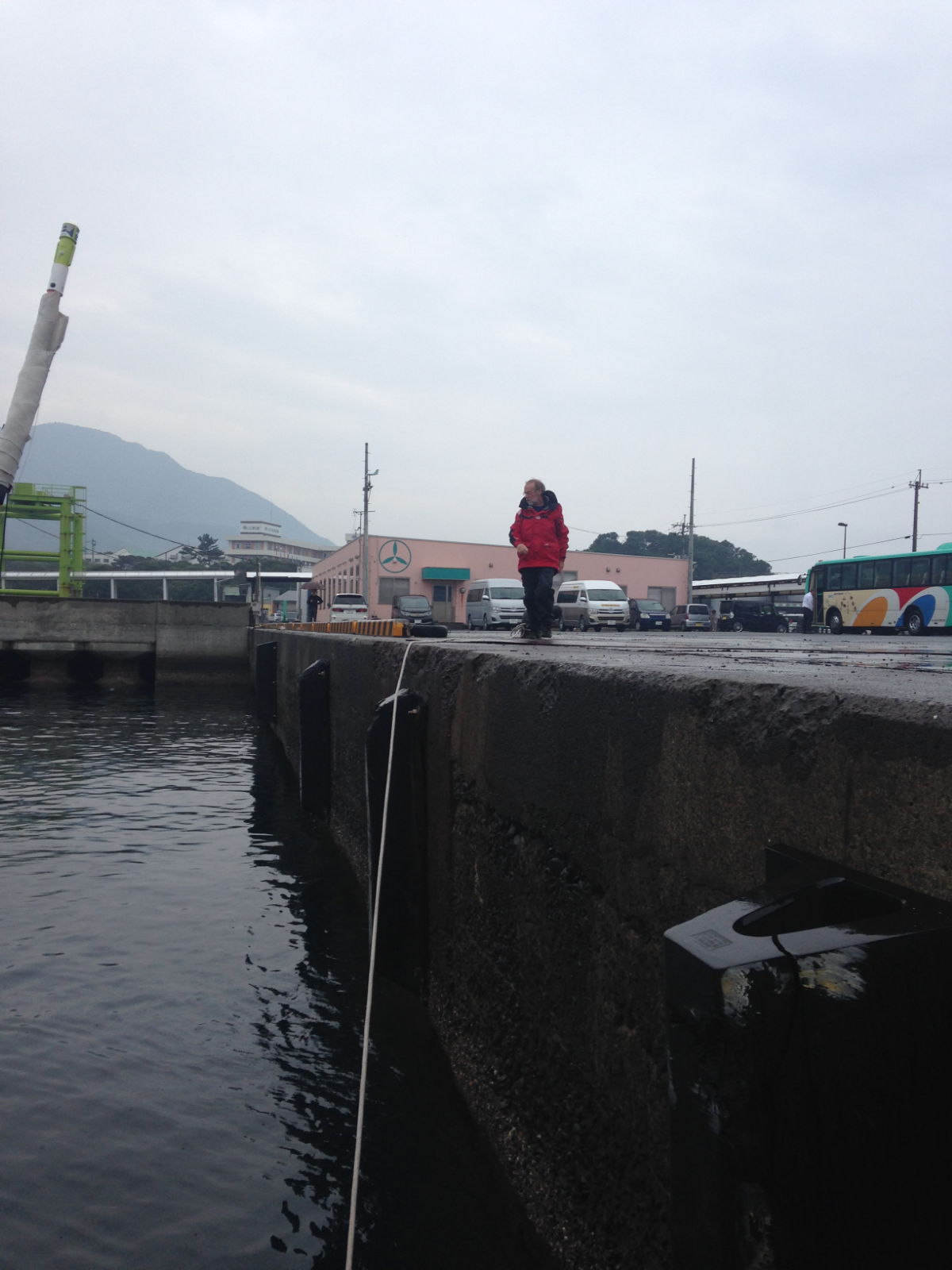

I loved Miyanoura from the moment we got off the boat. It was as if we’d landed in Alpine Europe, complete with pretty chalet-style houses.
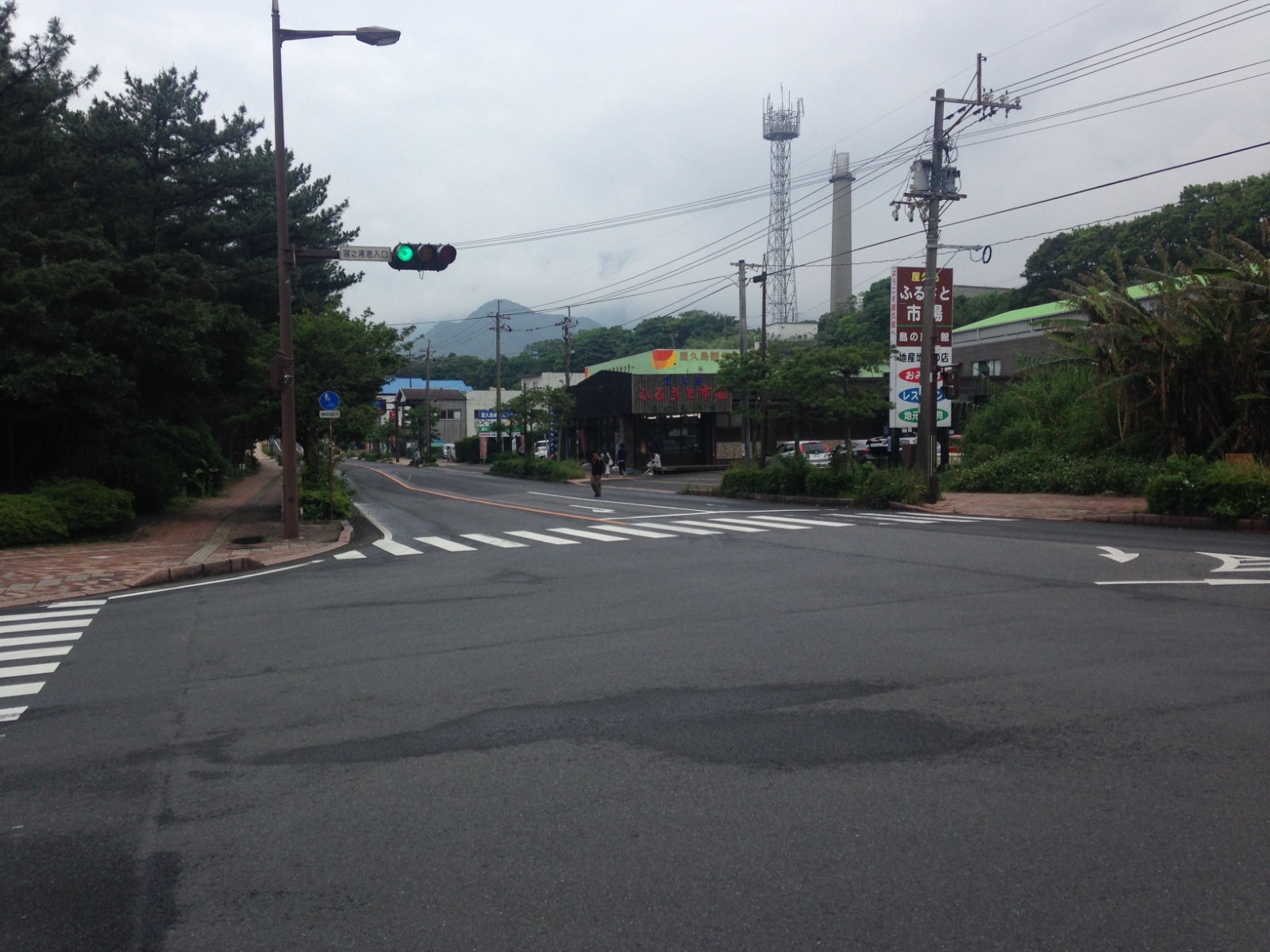
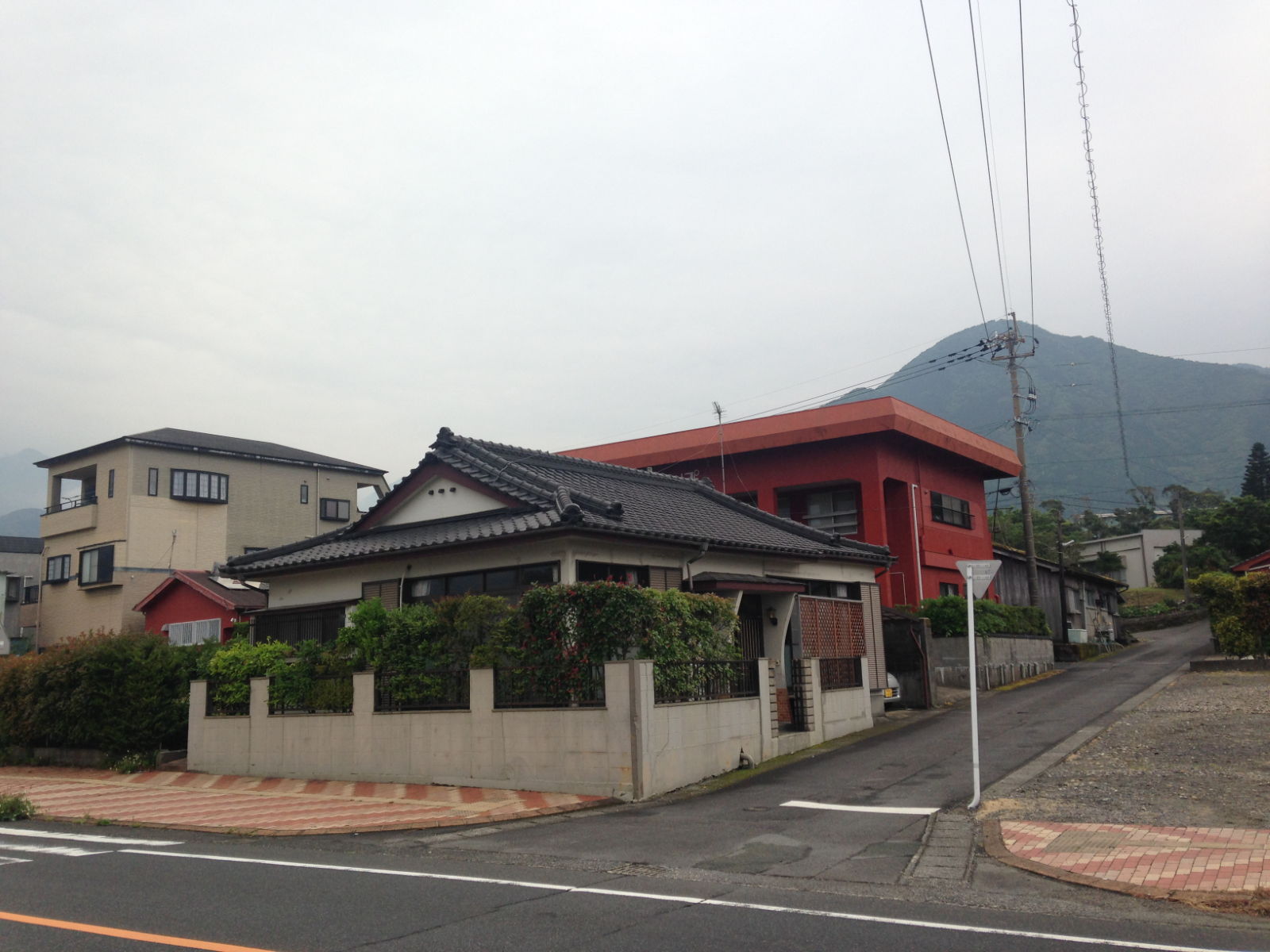
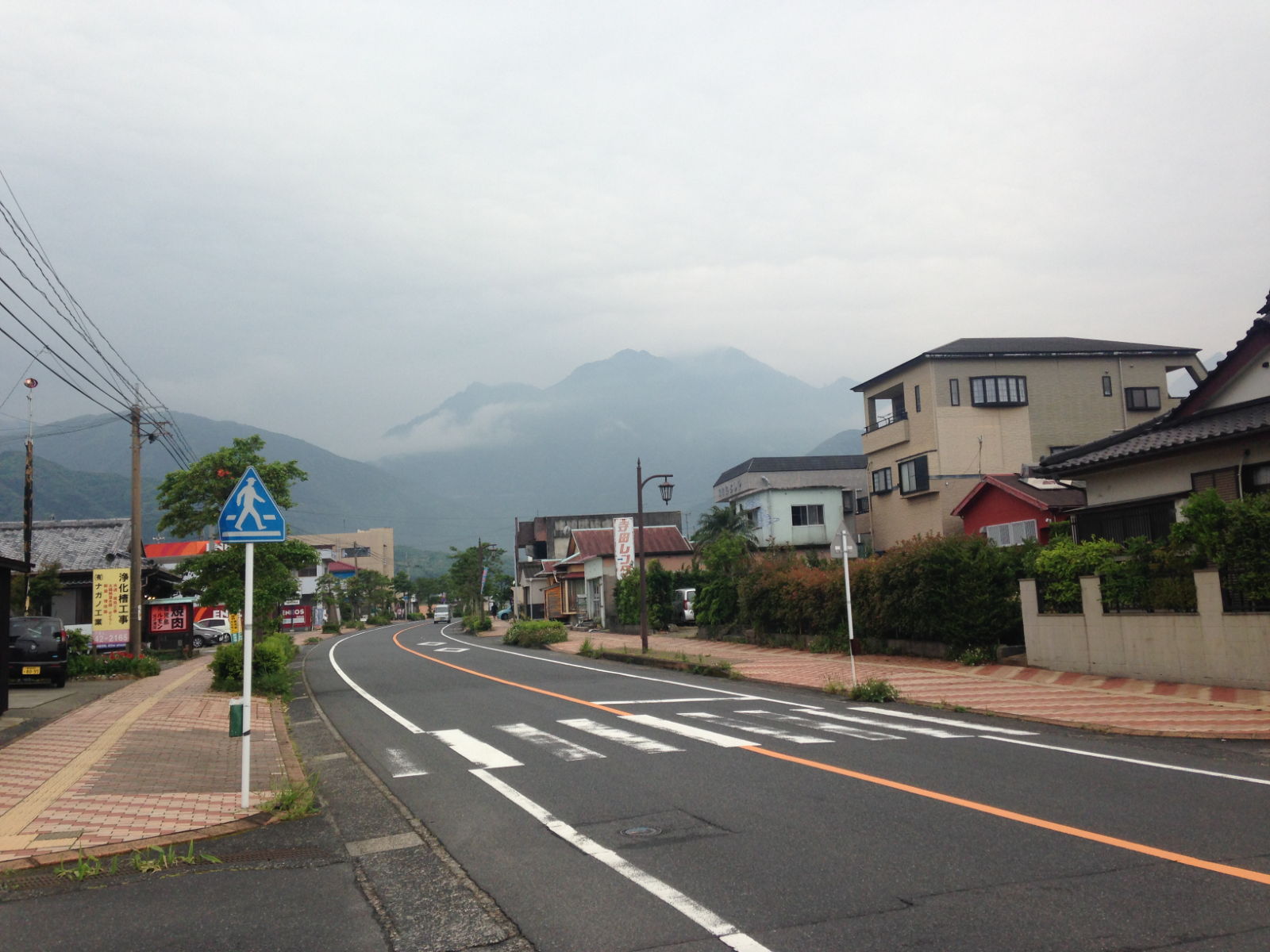
Yakushima Island is proud of its World Natural Heritage designation, and a visit to the village information centre revealed all the pursuits and attractions on offer. There are mountain climbs, forest trails, wilderness hikes and information about the legends, nature and culture of the area. As we walked around the largely deserted, quiet town it continued to rain softly and the river, in the dusk light looked spectacular. No apologies for taking lots of pictures of misty, magical Miyanoura.
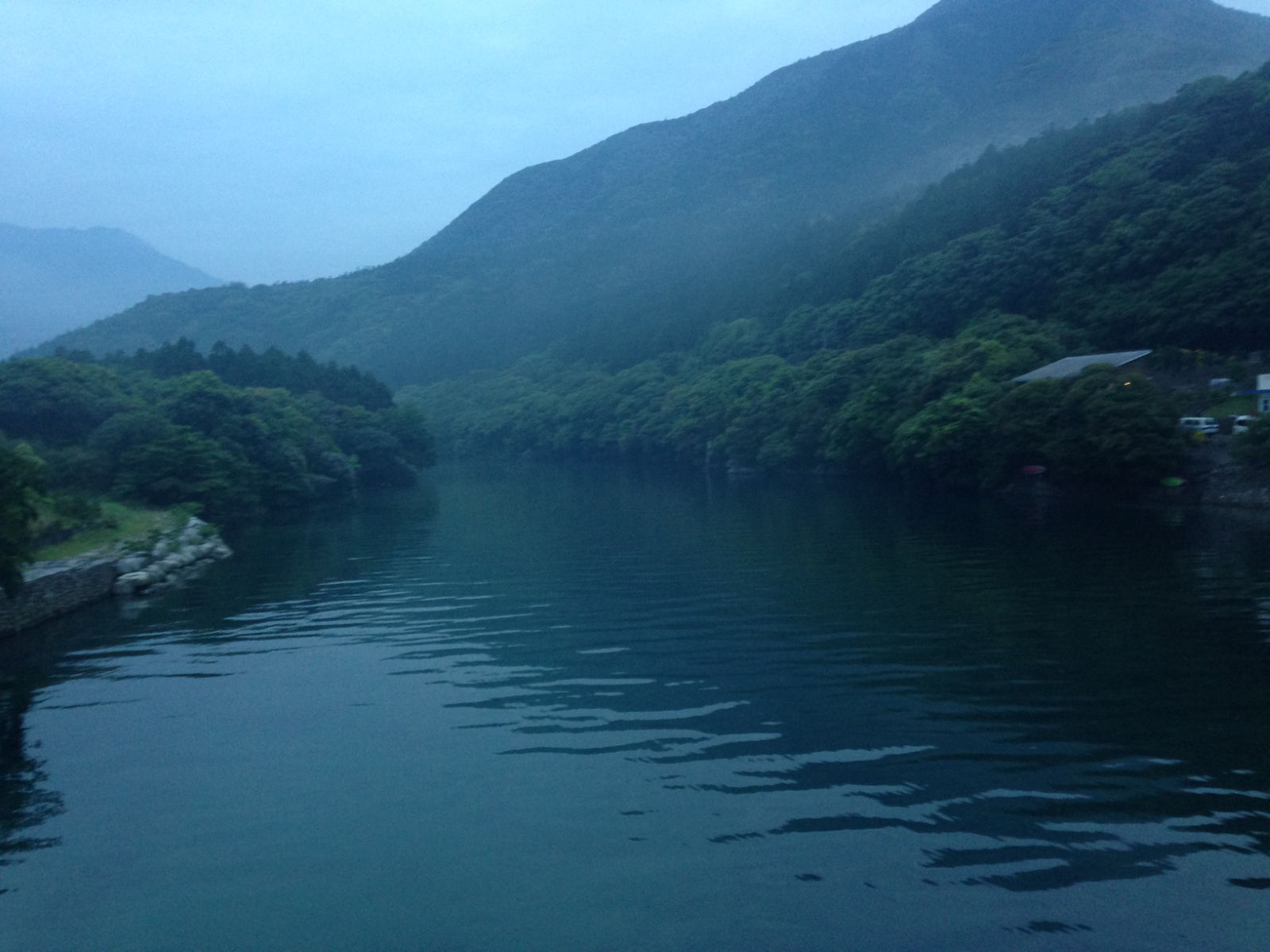
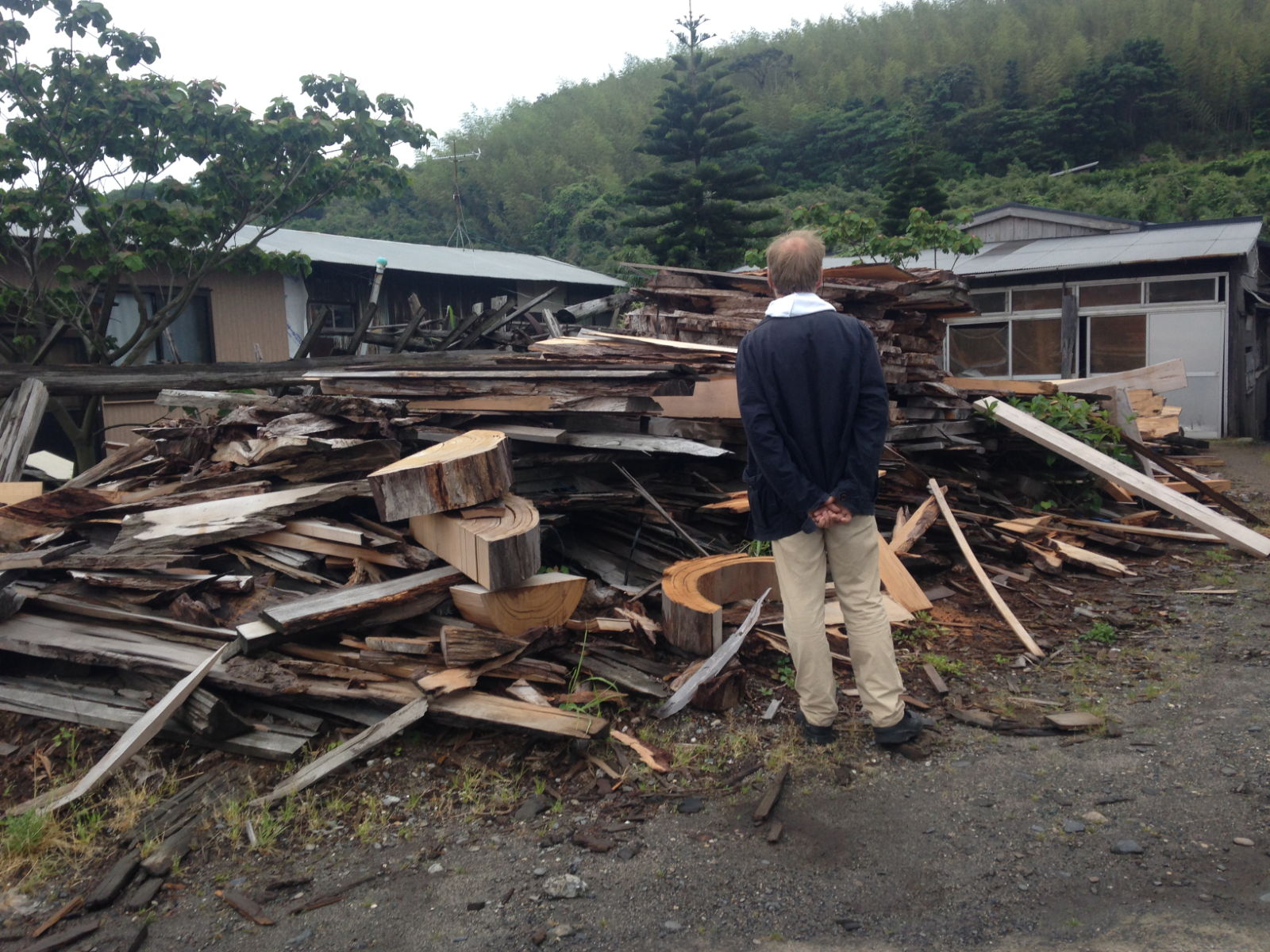
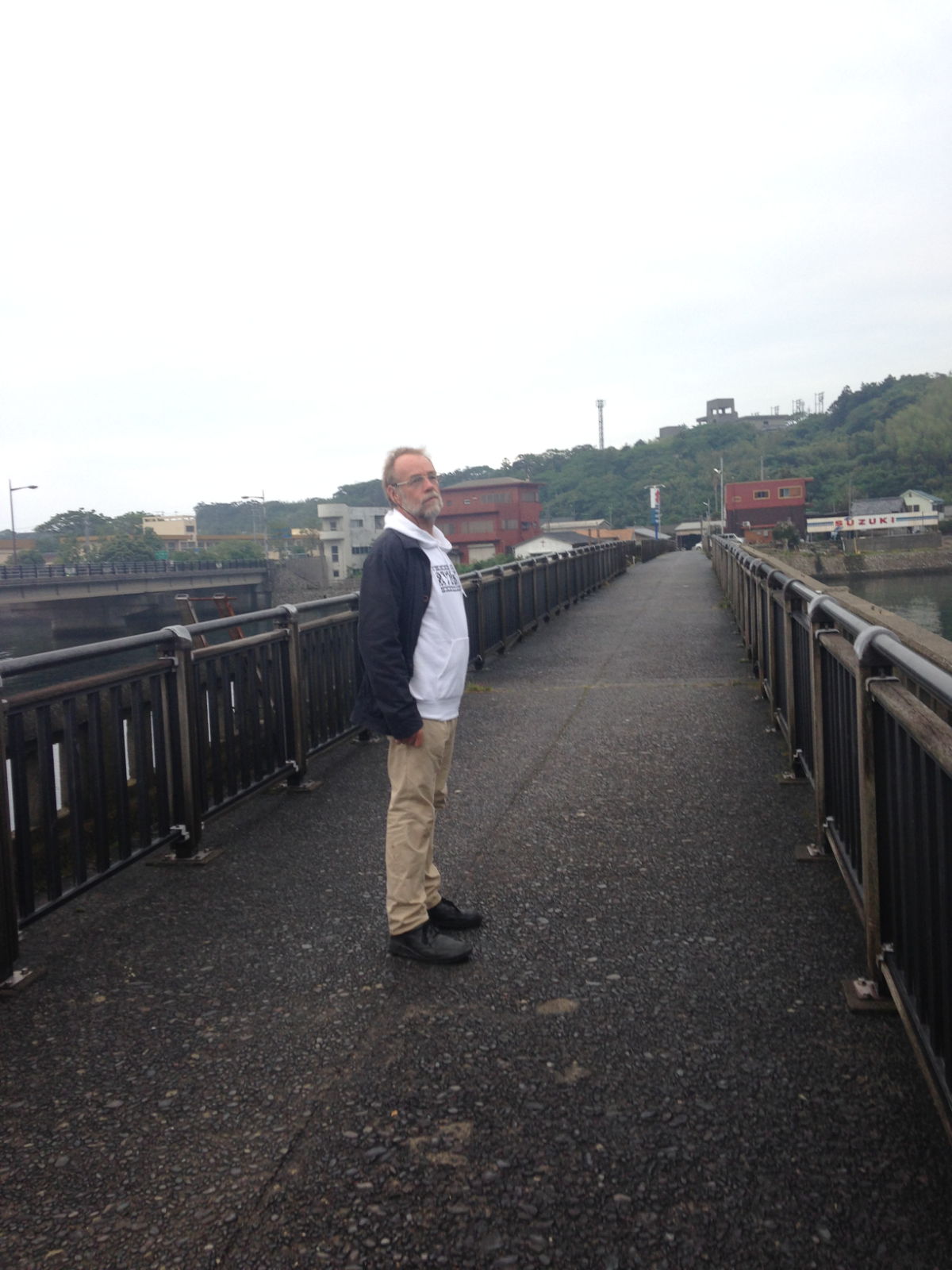
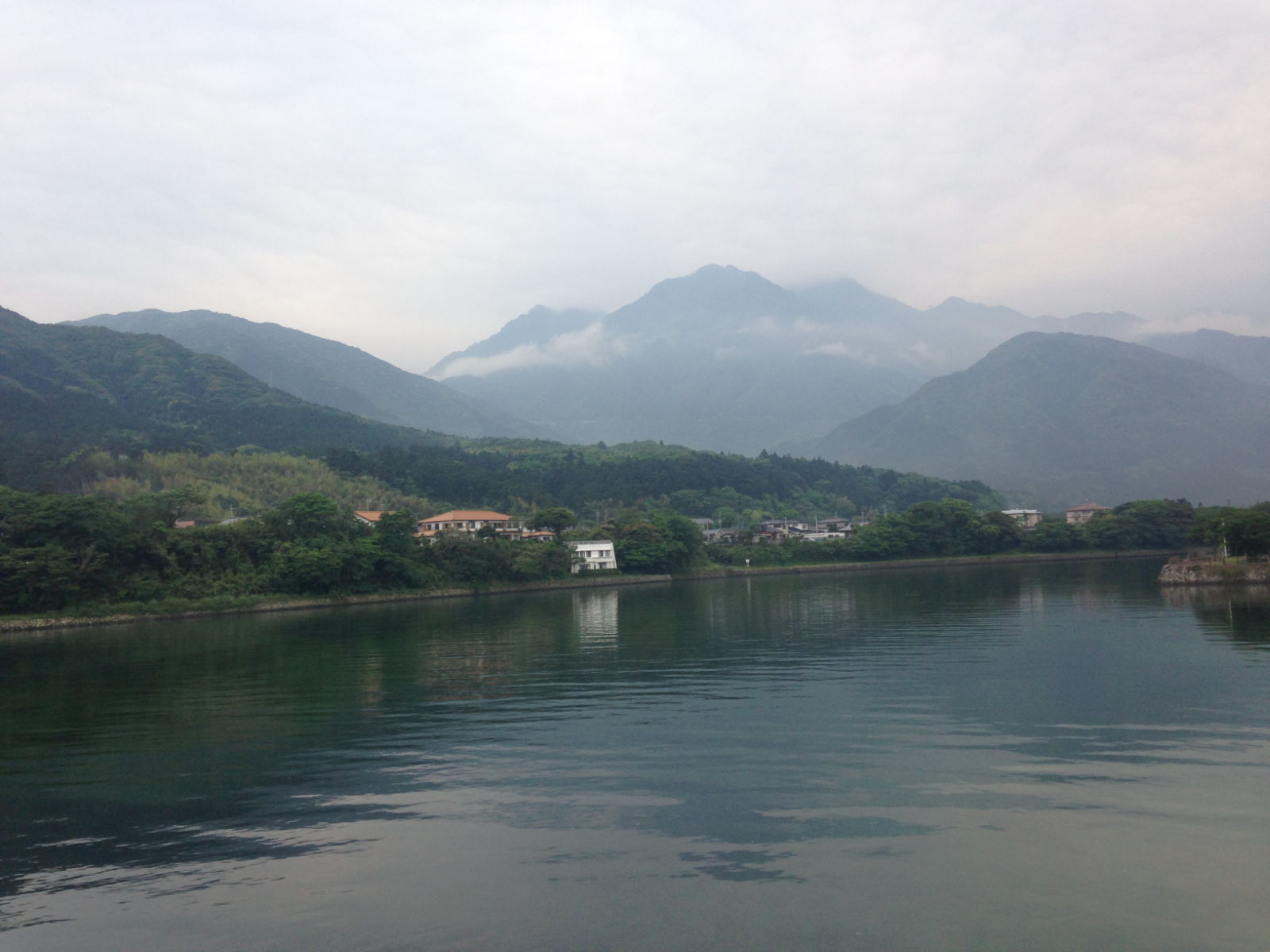
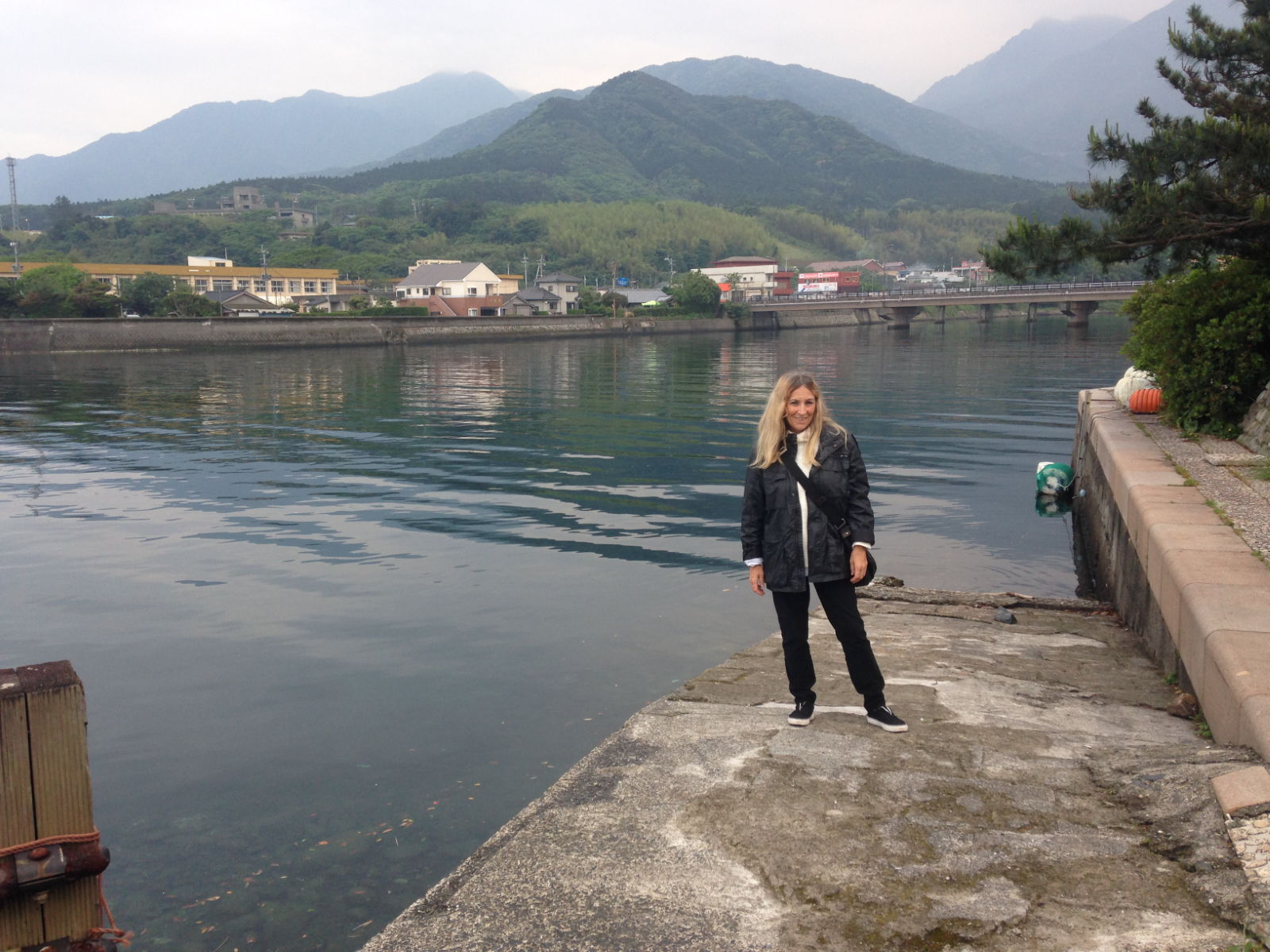
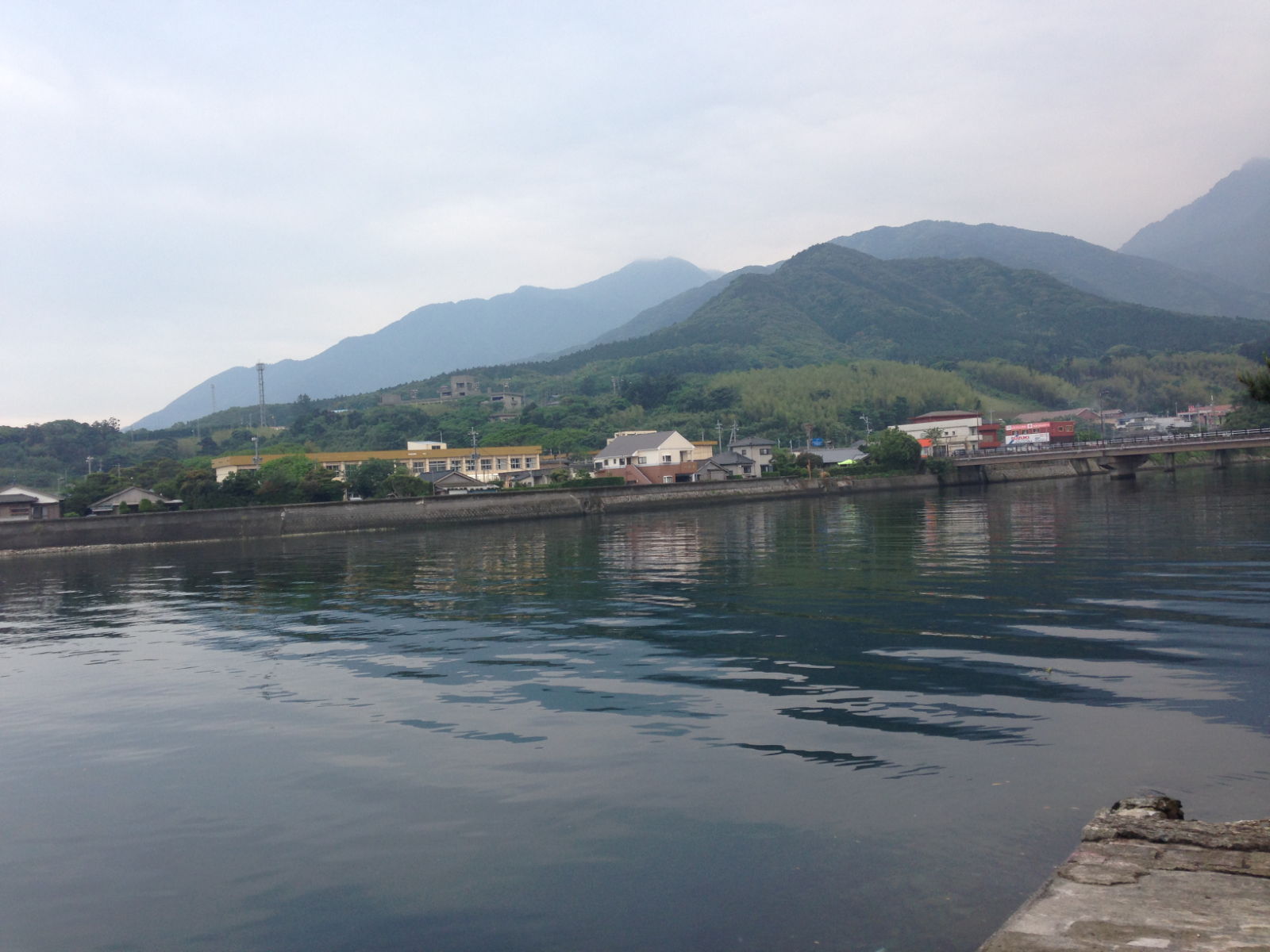
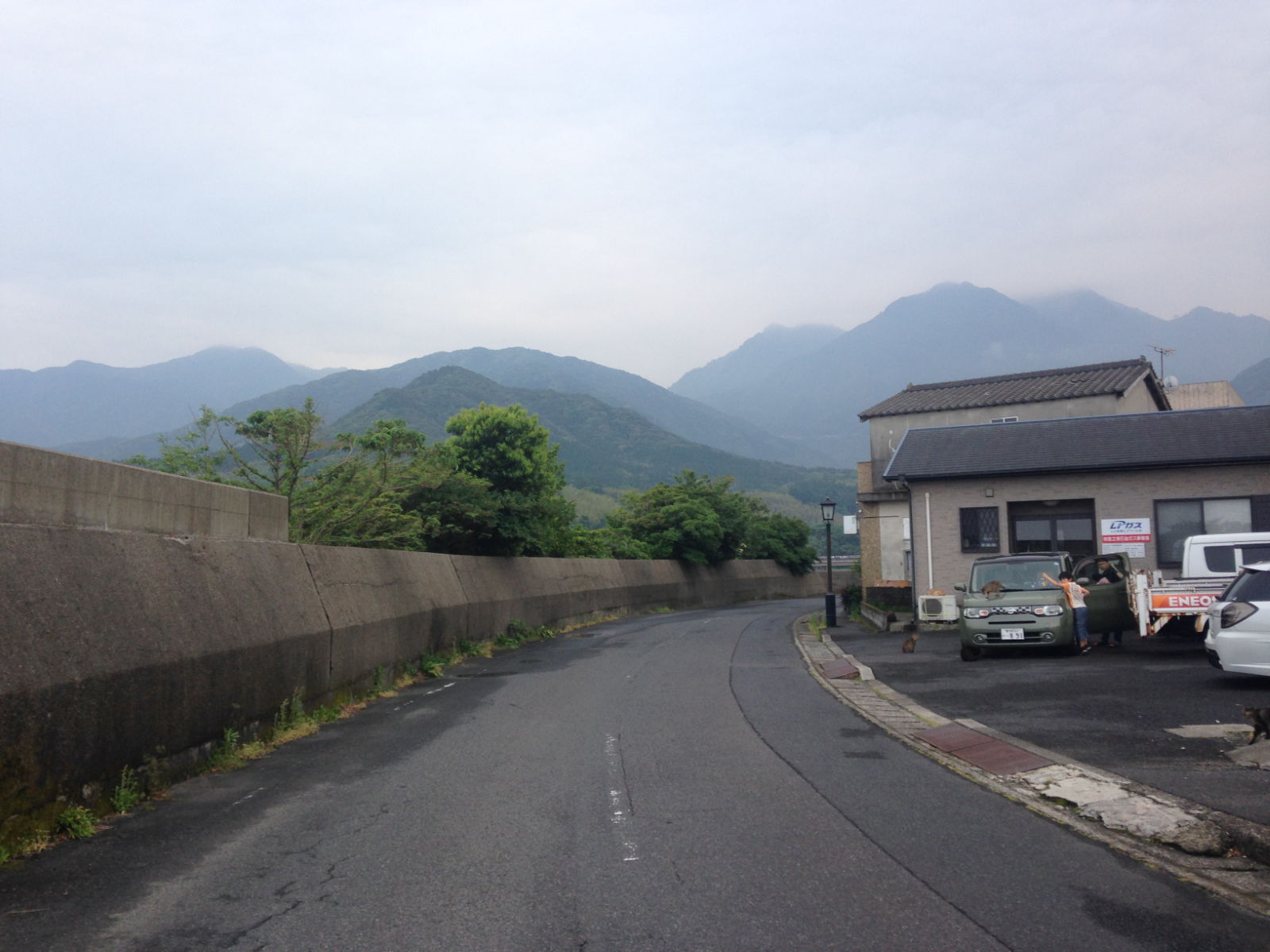
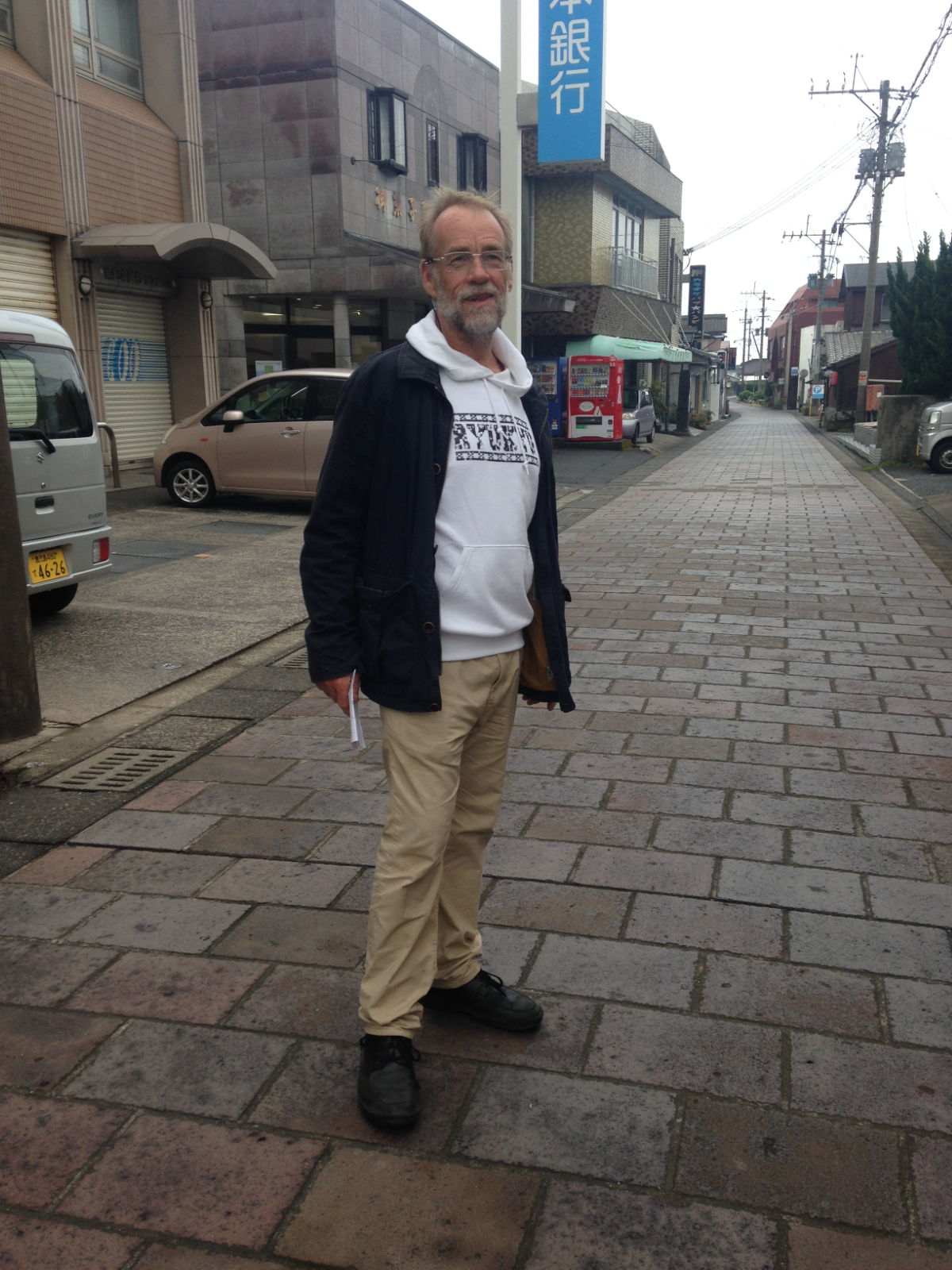
We ended our day there by stumbling upon a restaurant near the harbour in the style of a country pub, just as we’d given up hope of finding anywhere to eat in the empty town. We were its only customers and typically, it looked as if it was closed at first. The food was a bit pricey but nice enough. I would have loved to explore Miyanoura further but the start date of the rally was fast approaching and we needed to make progress to get to the venue.
Kathy
